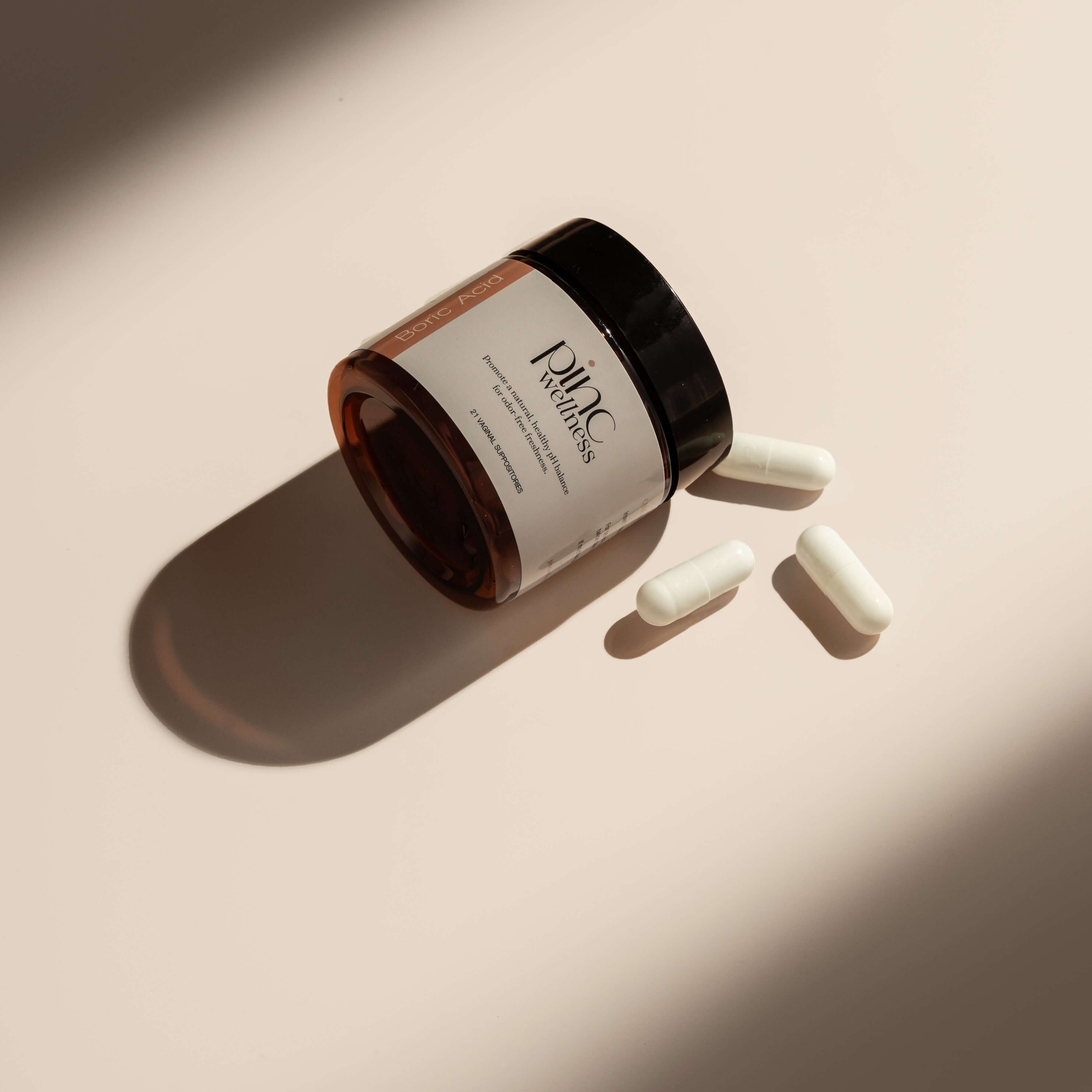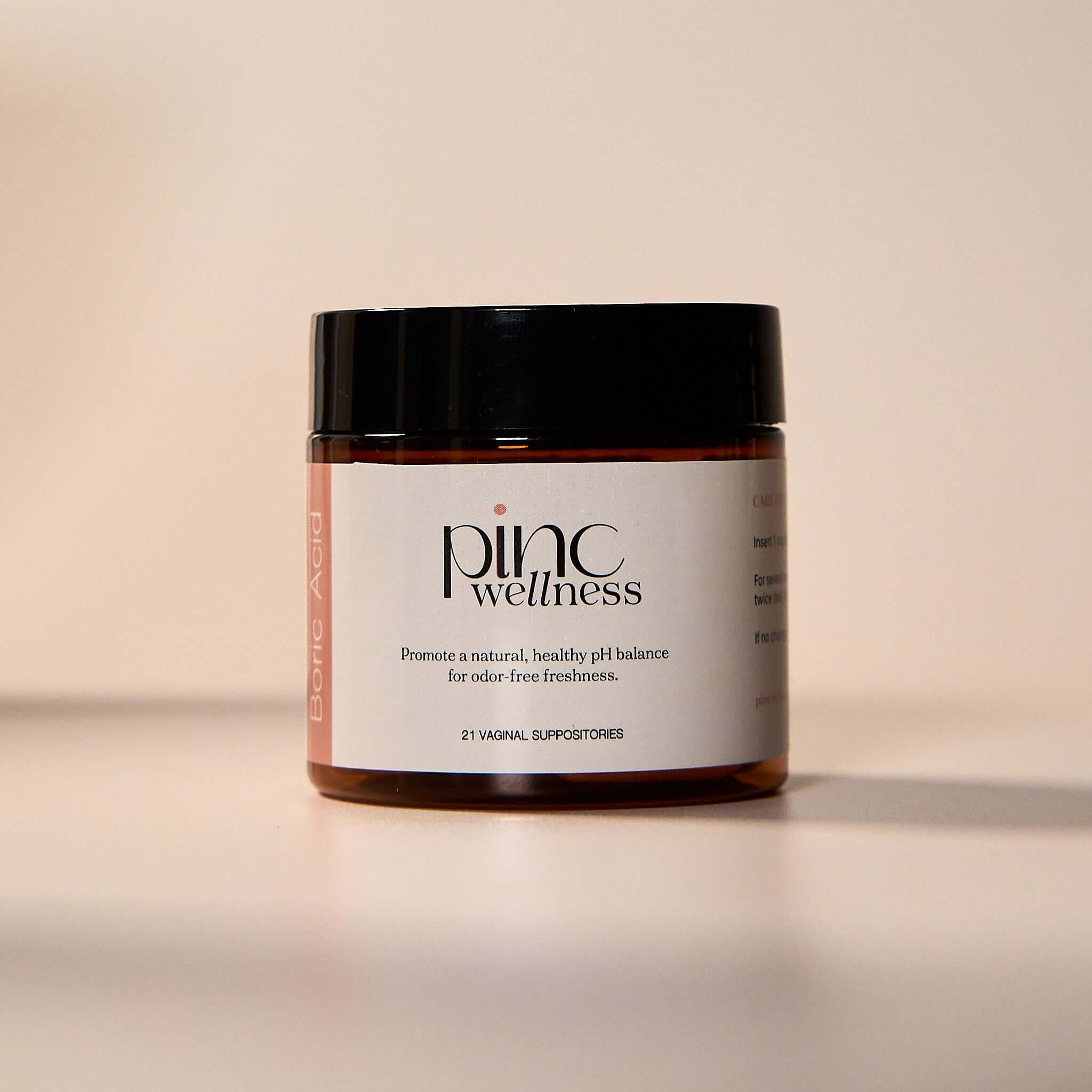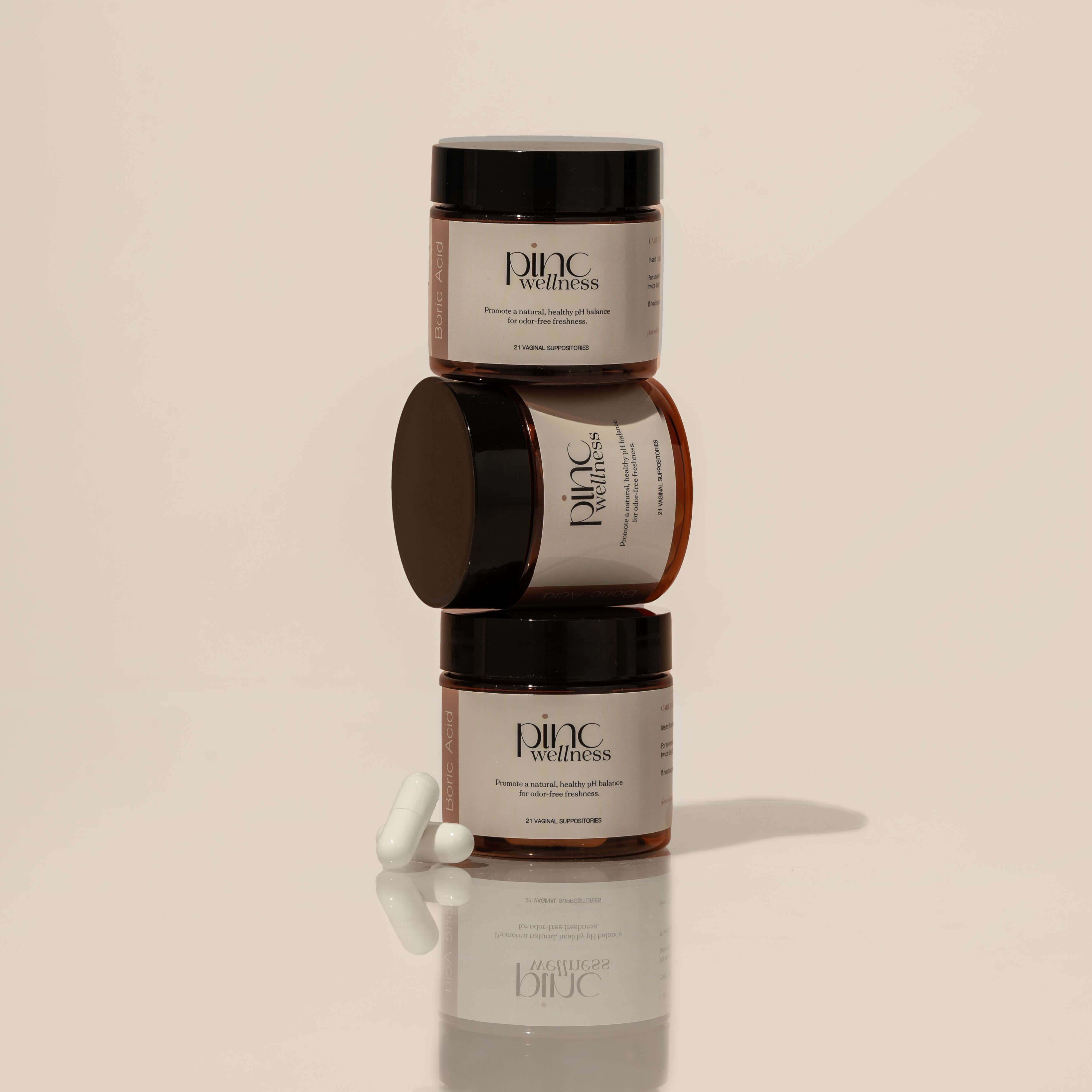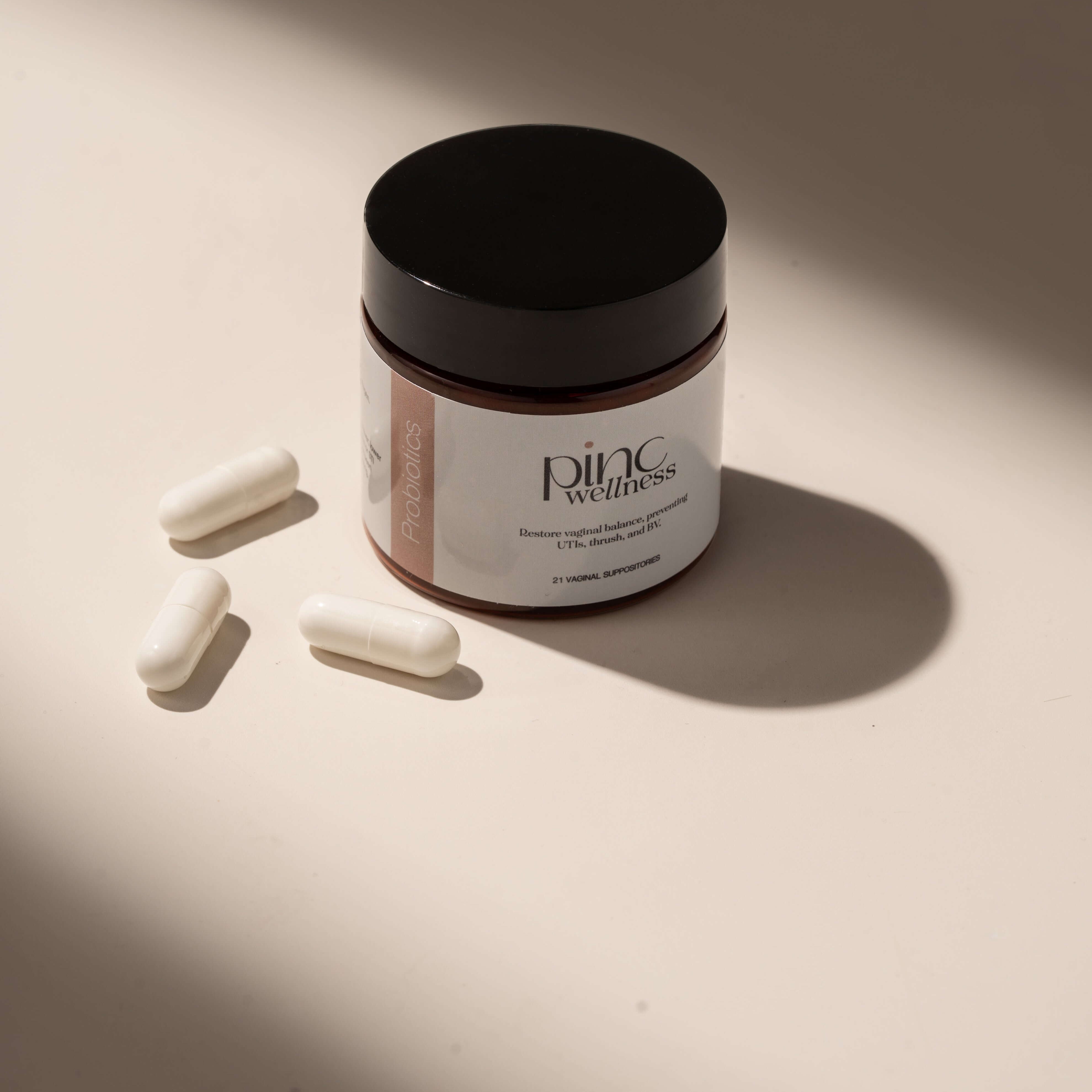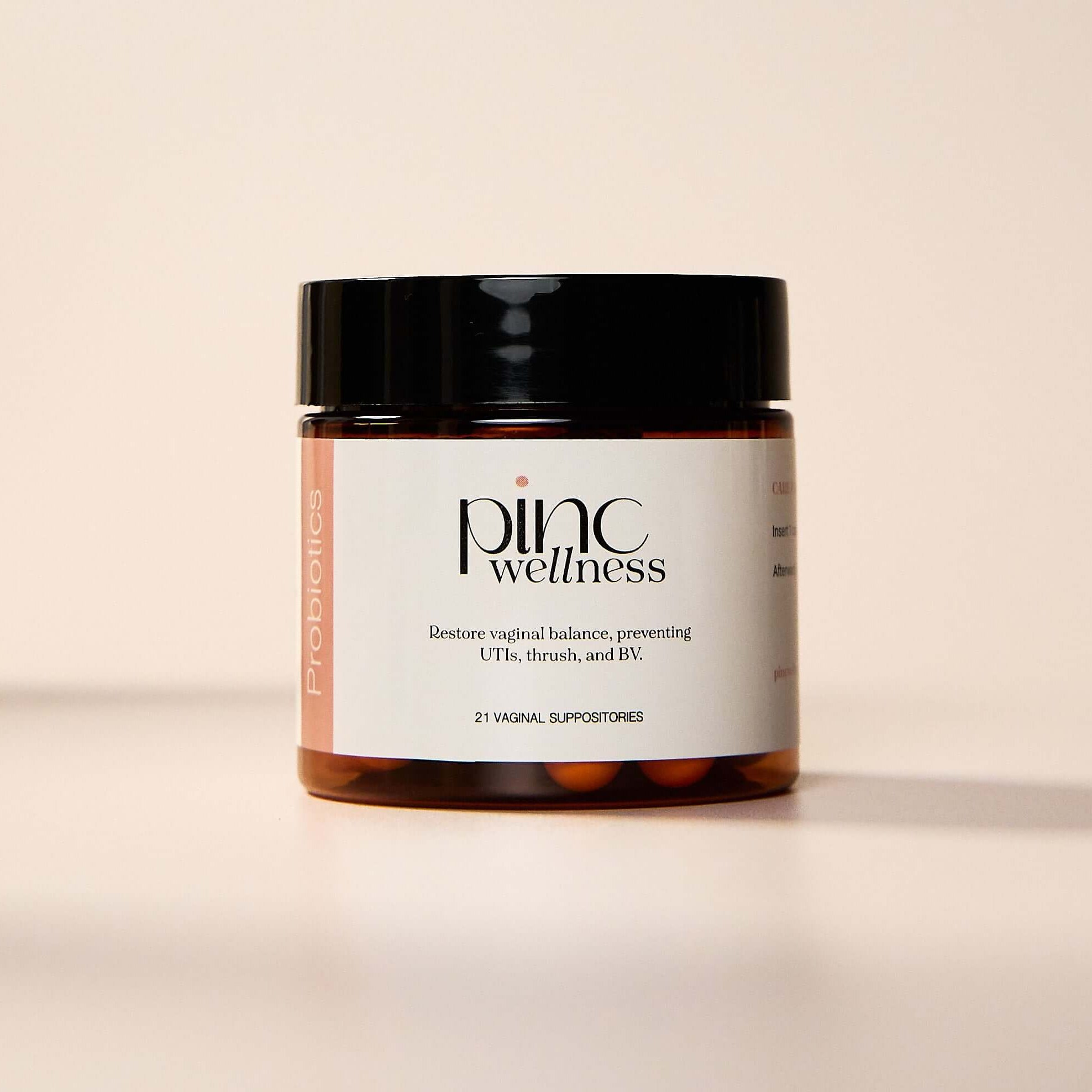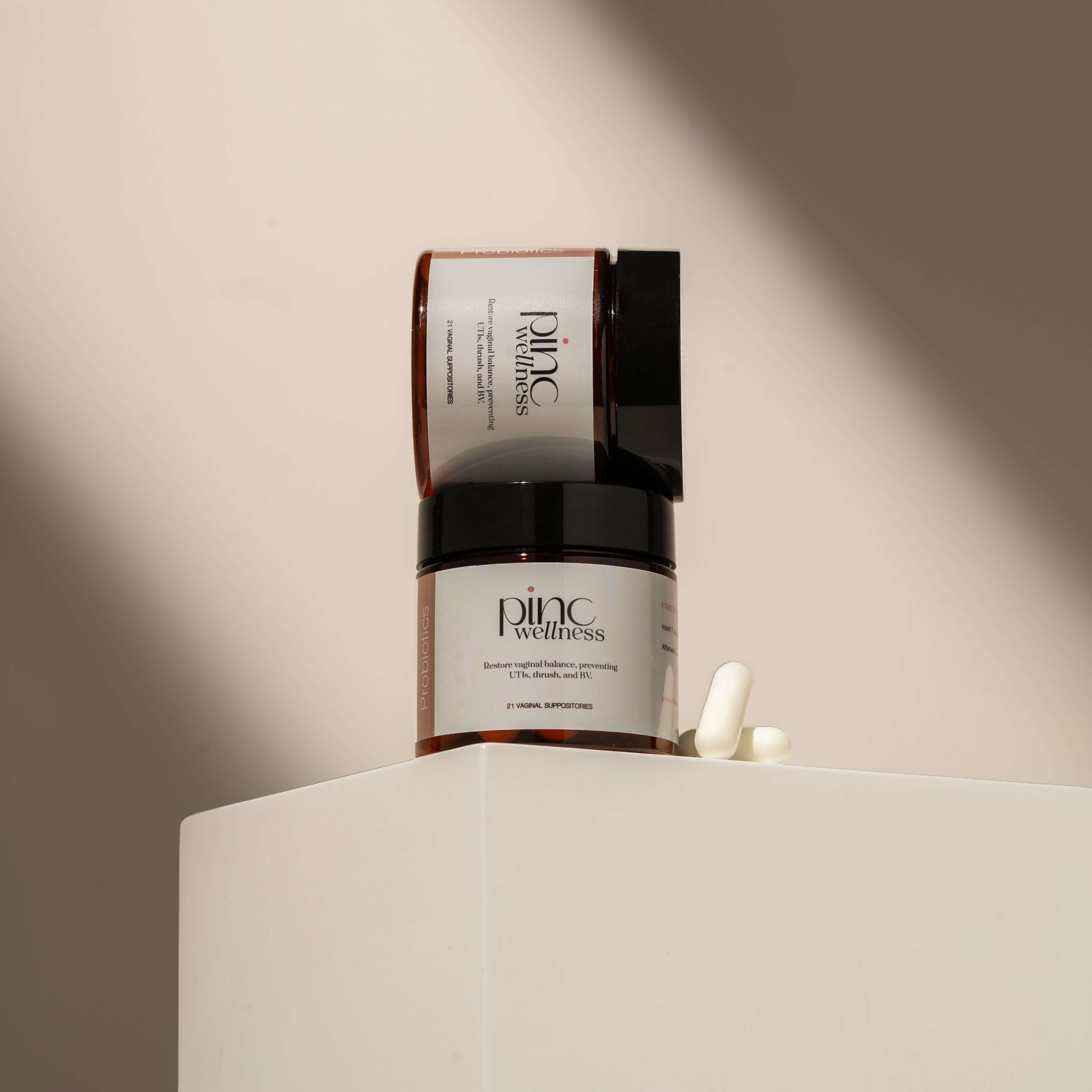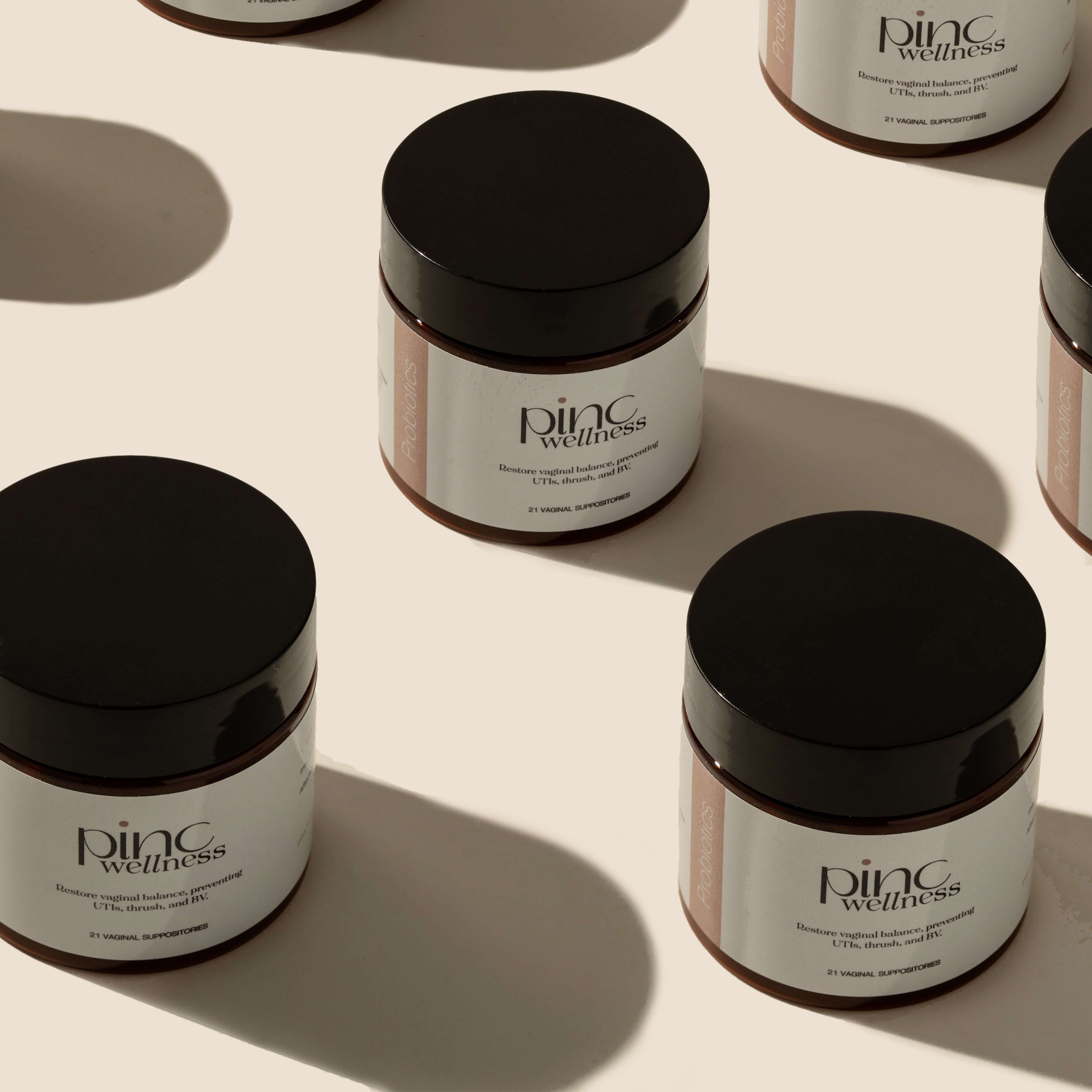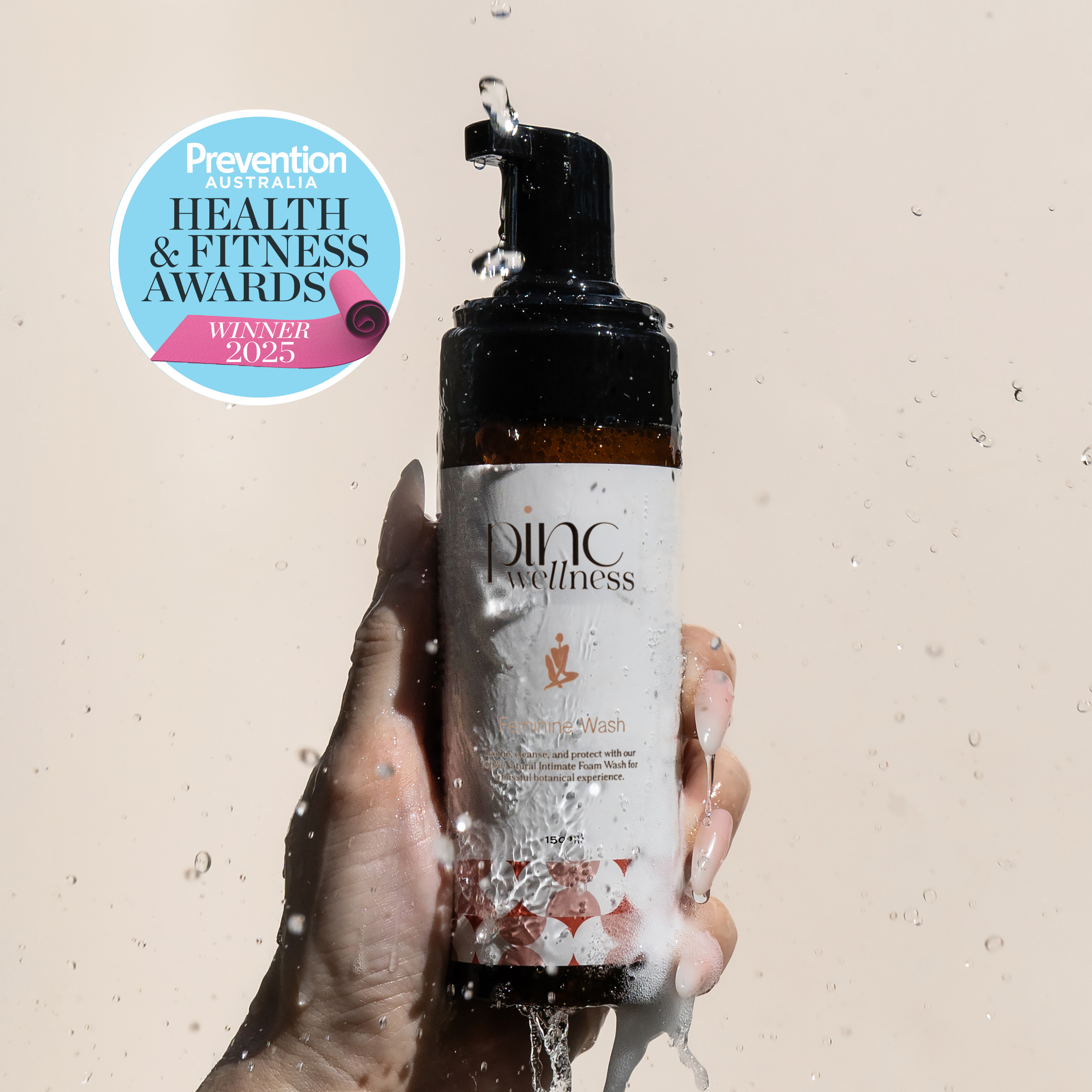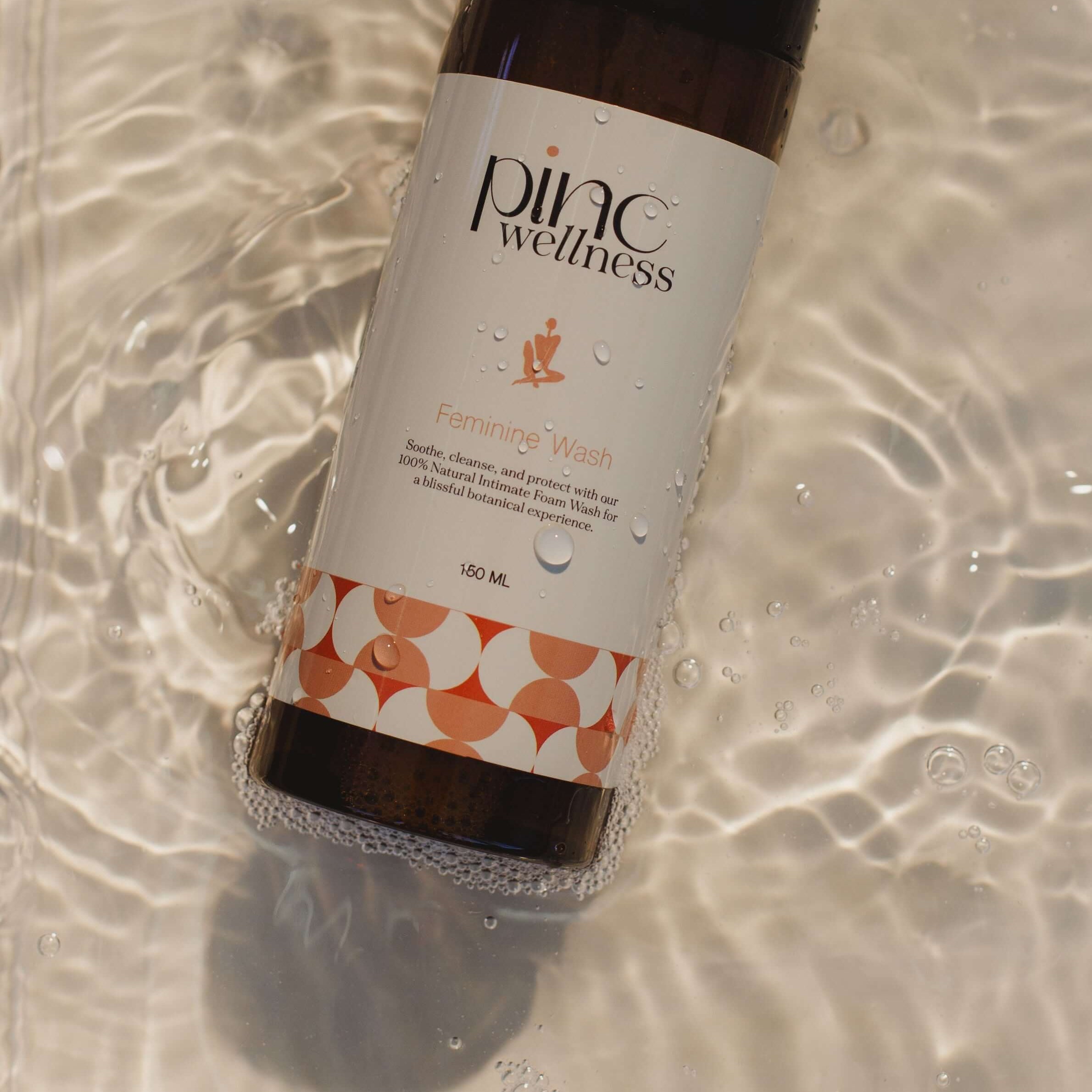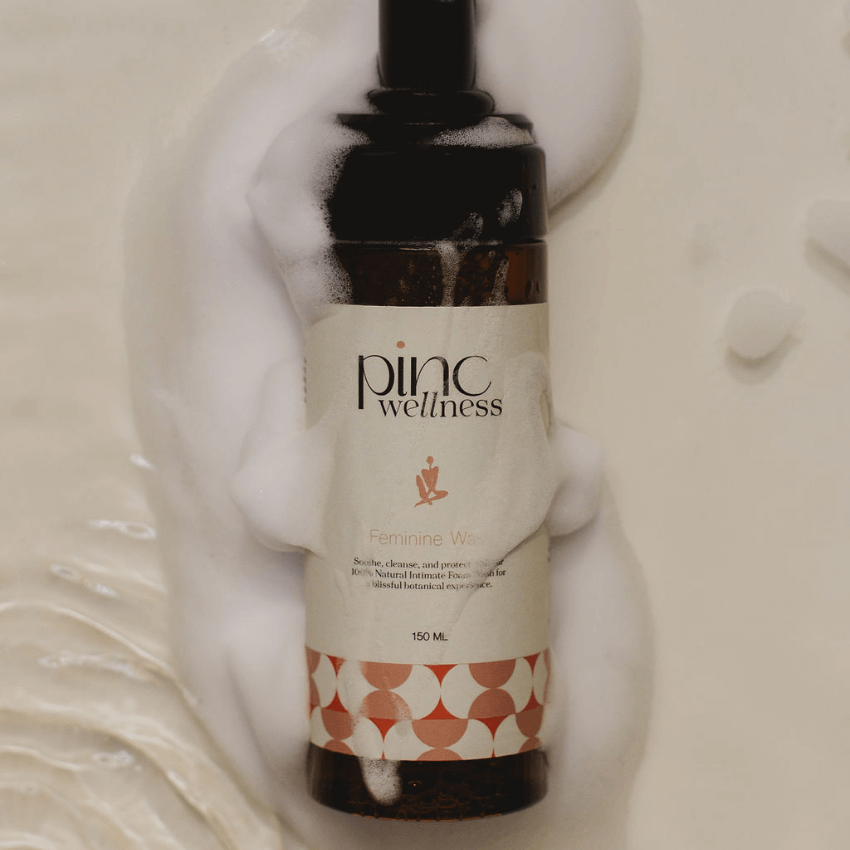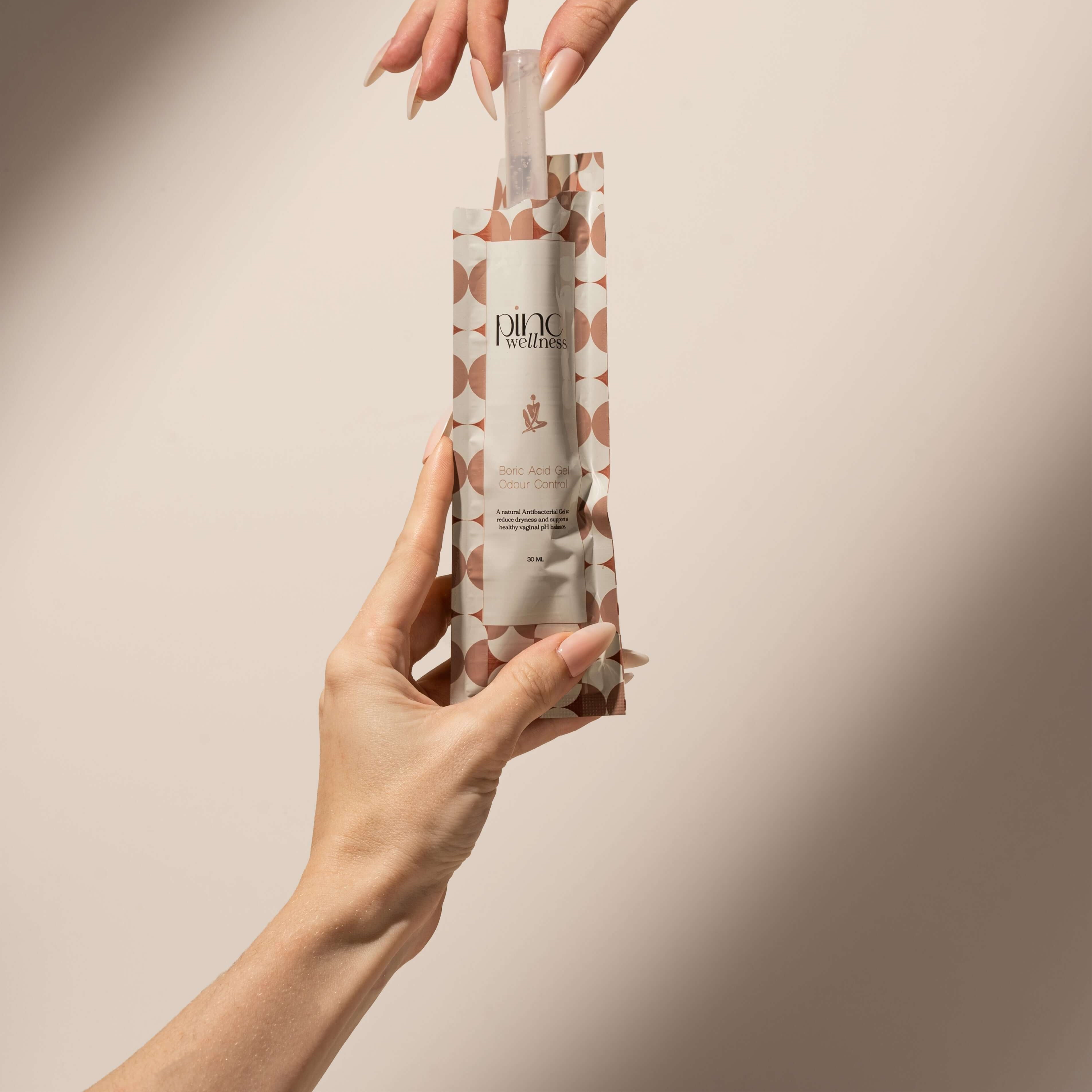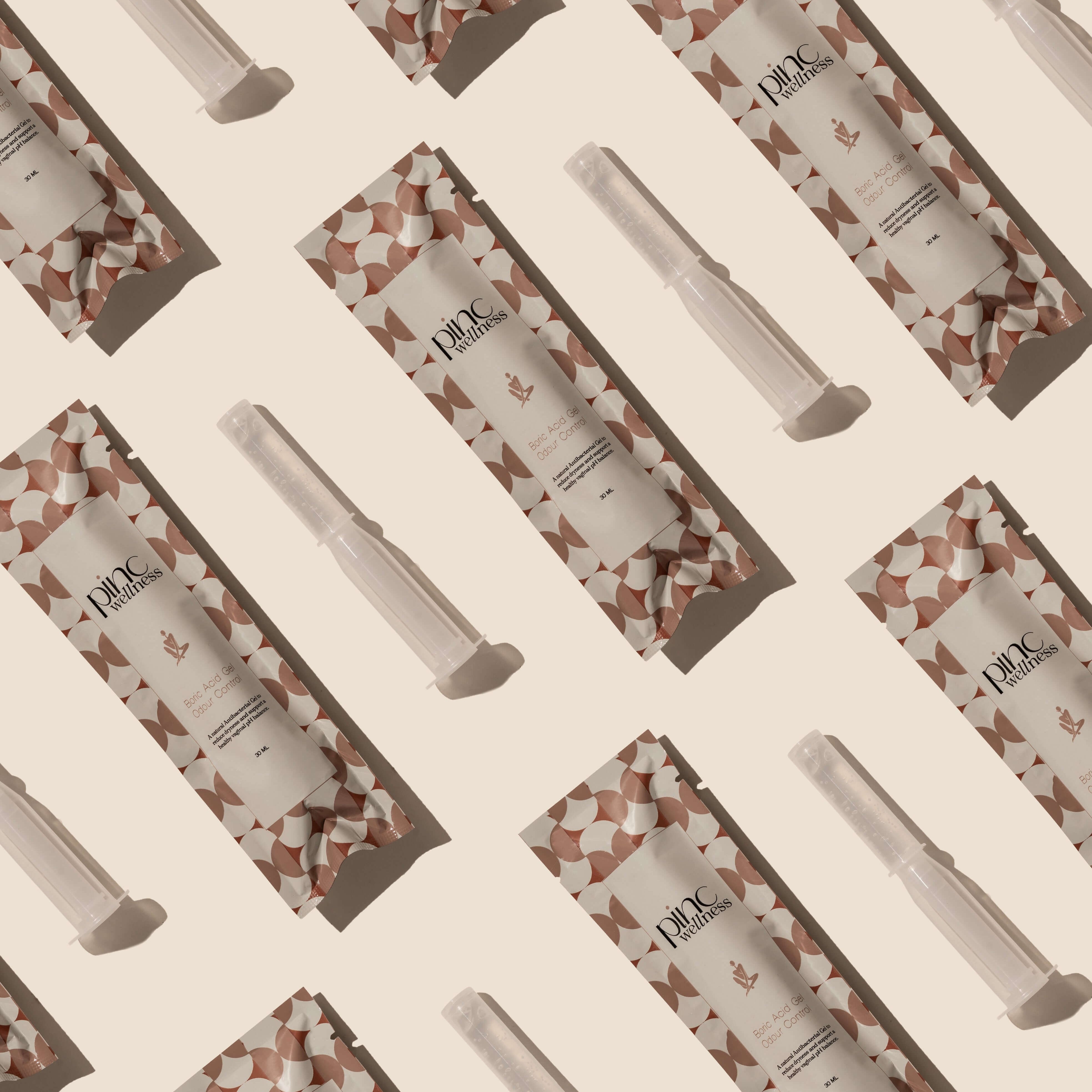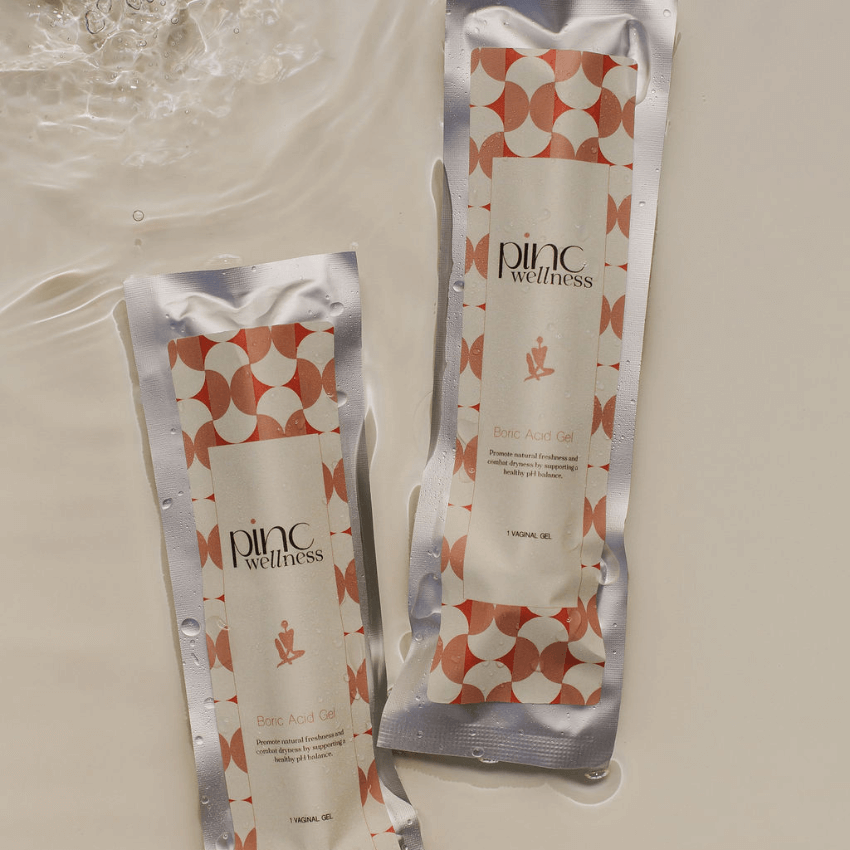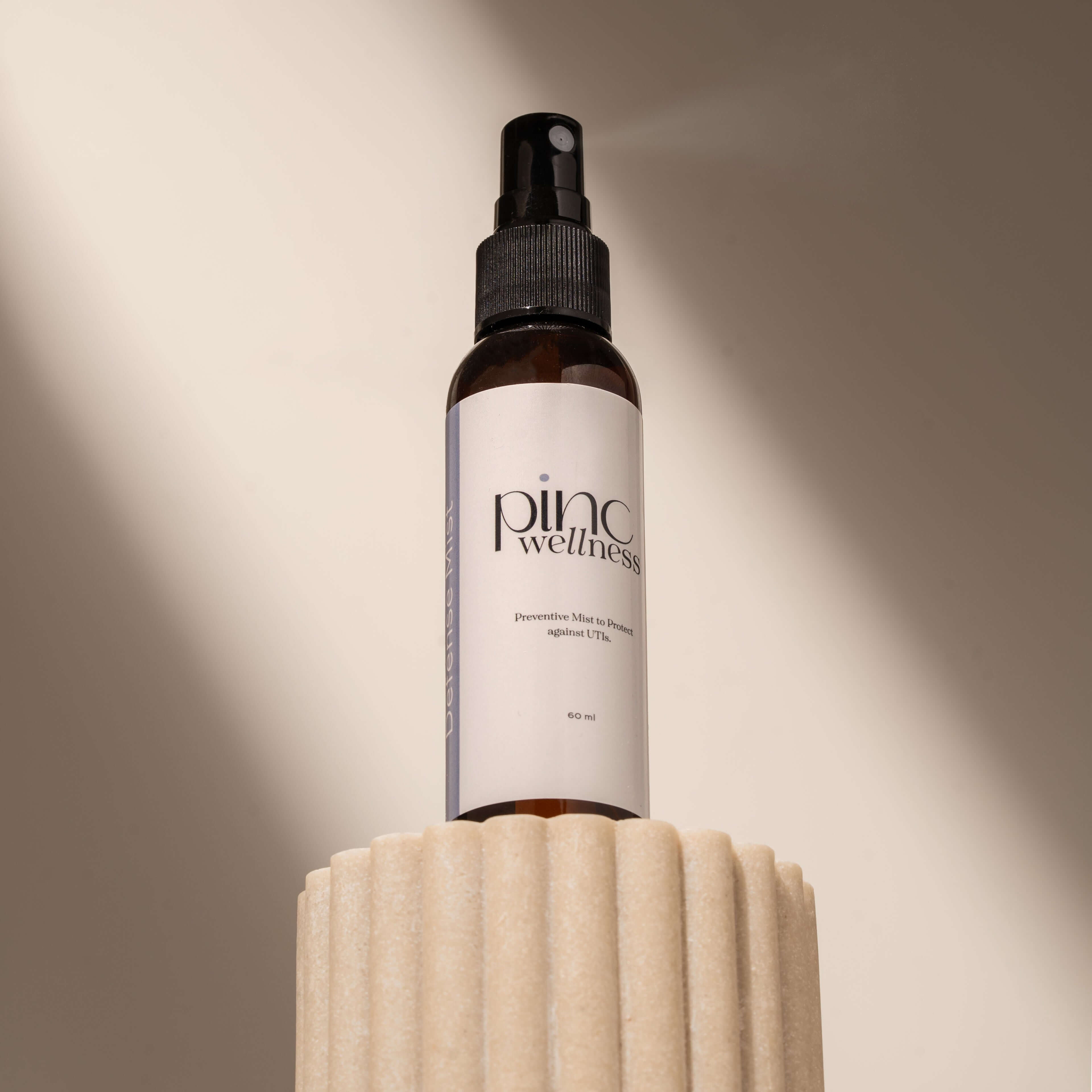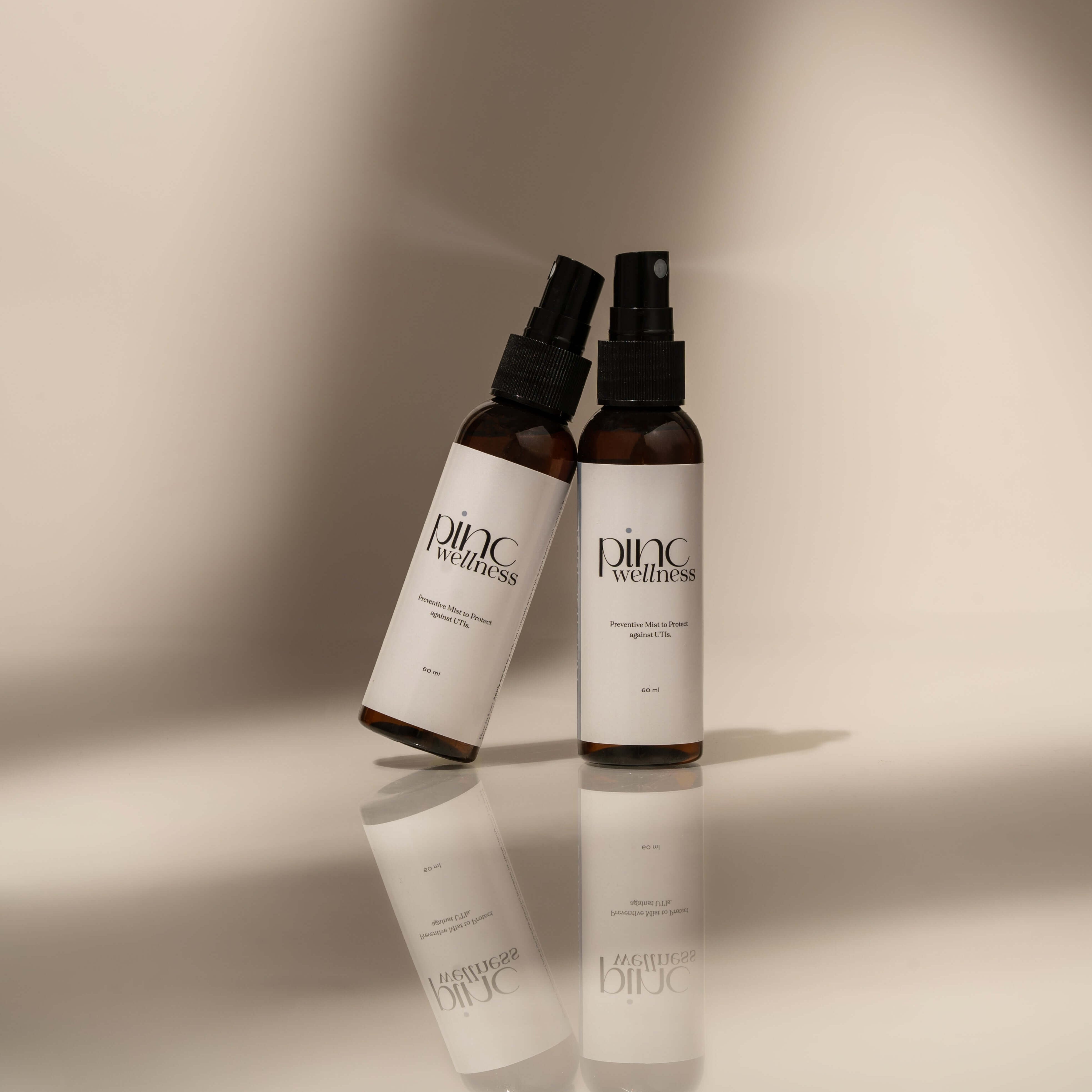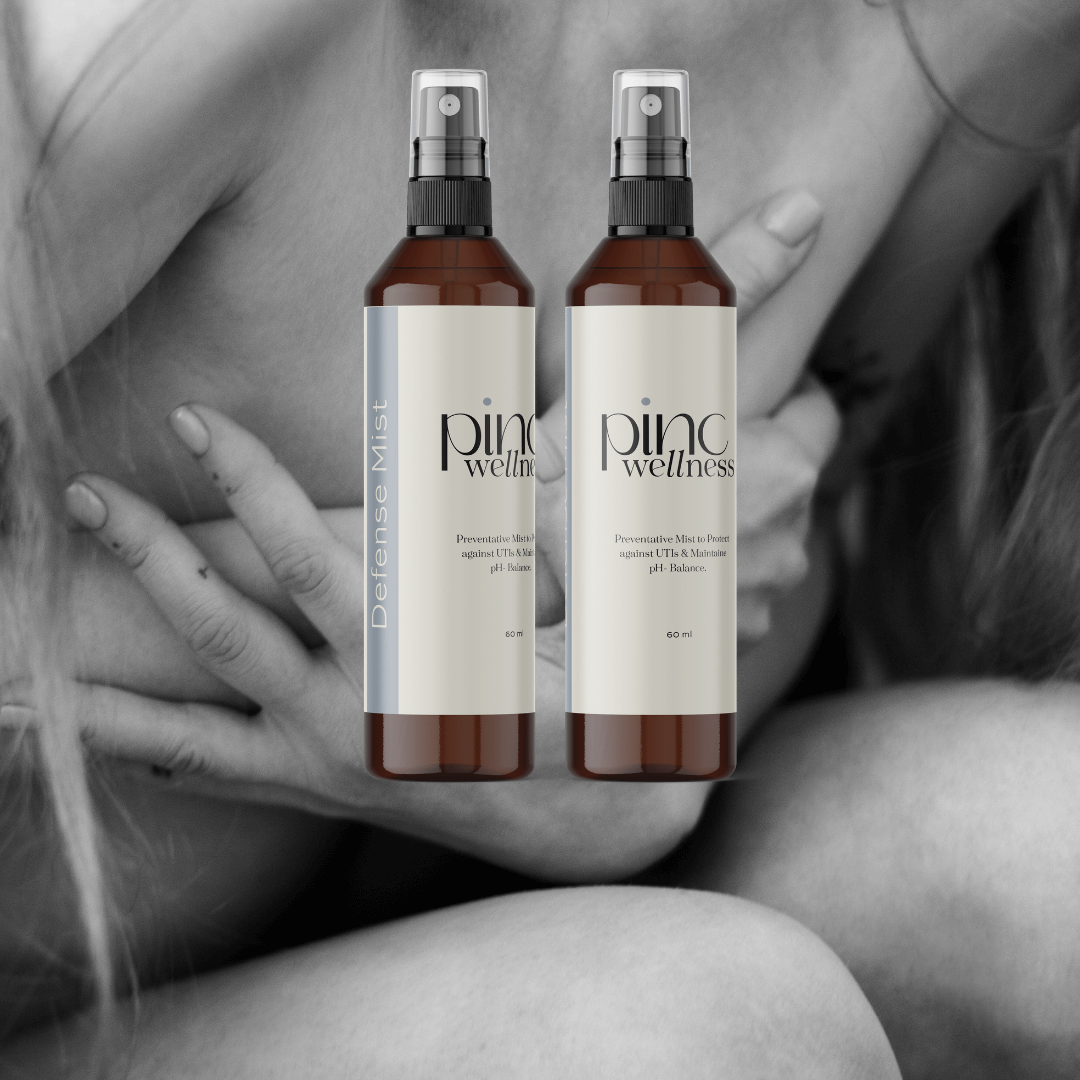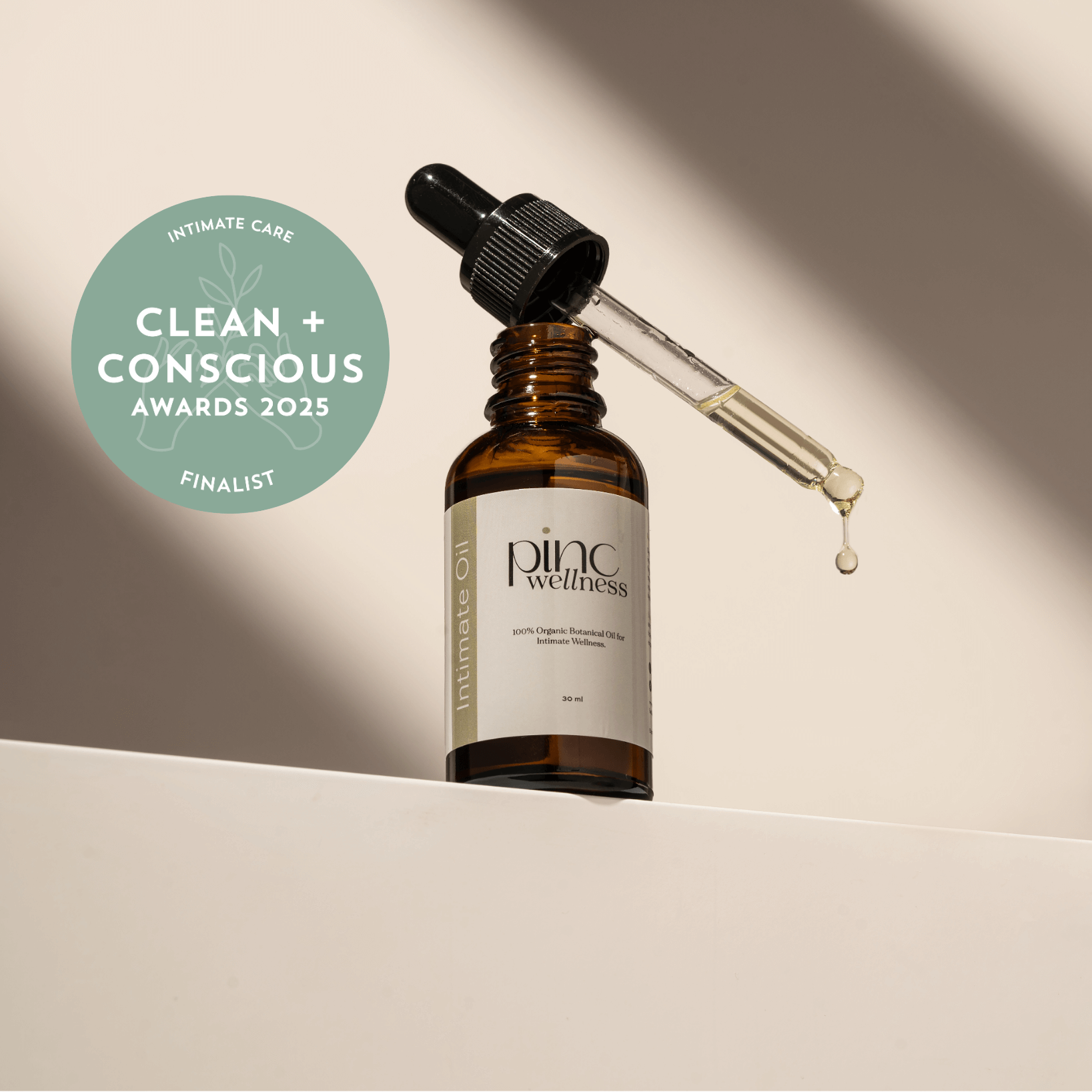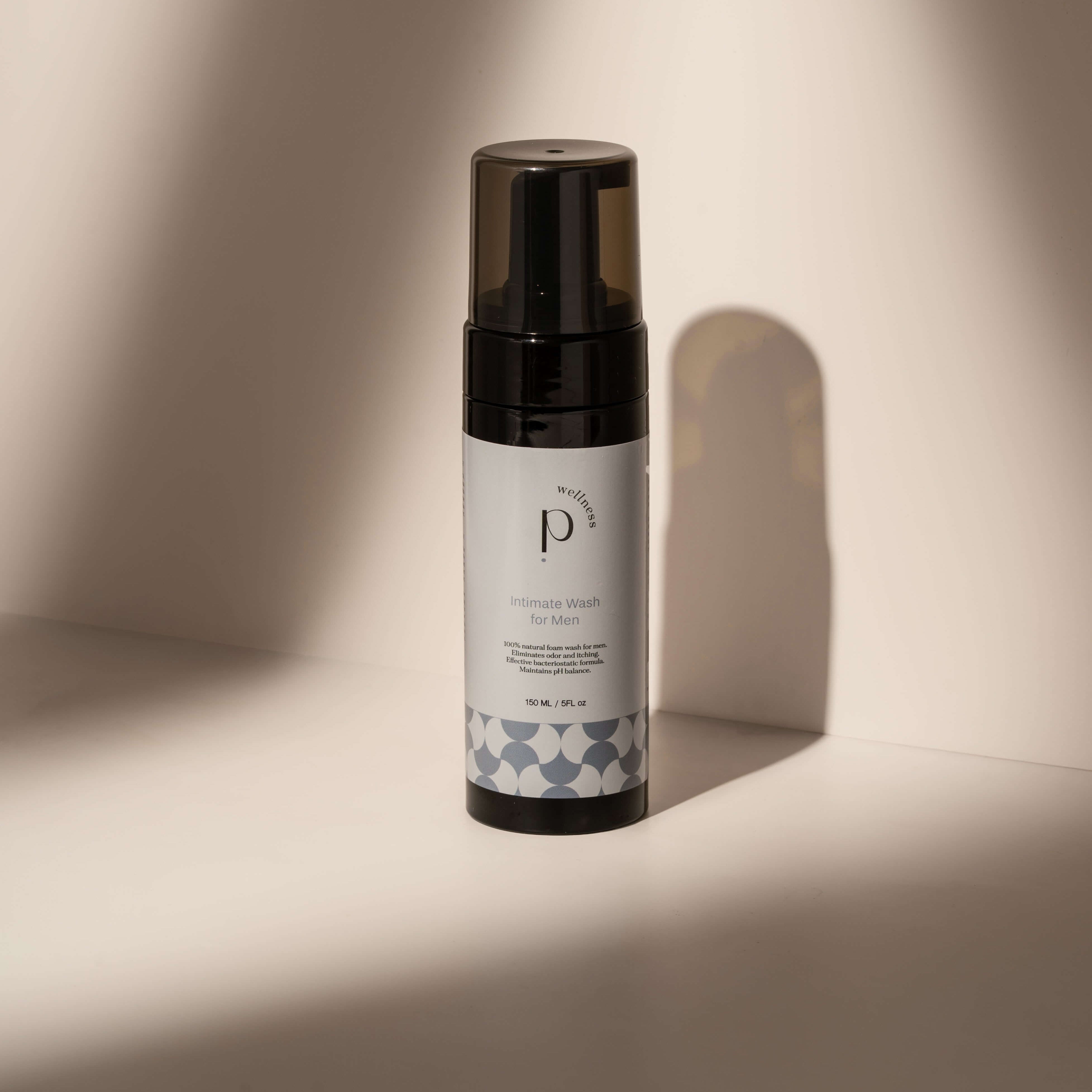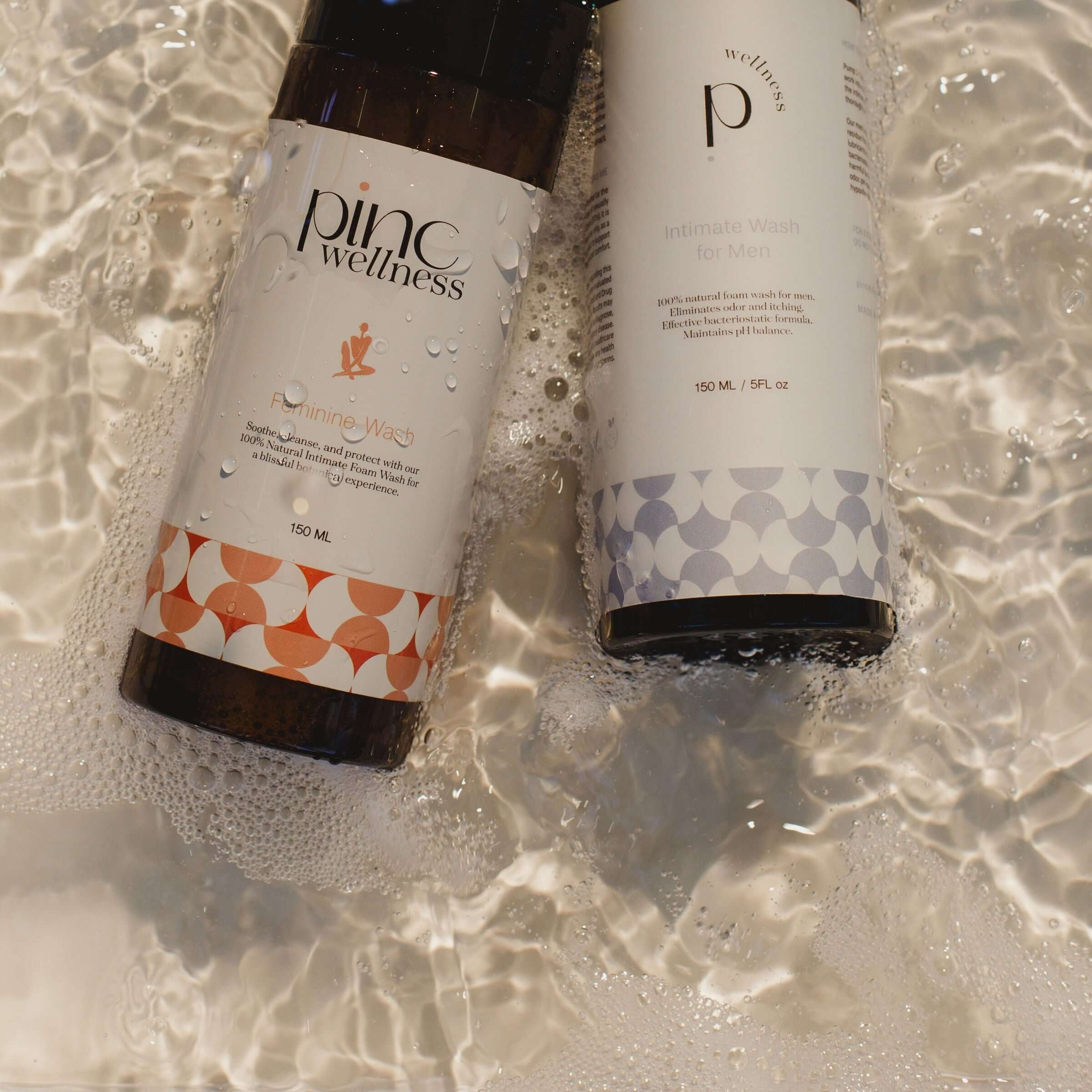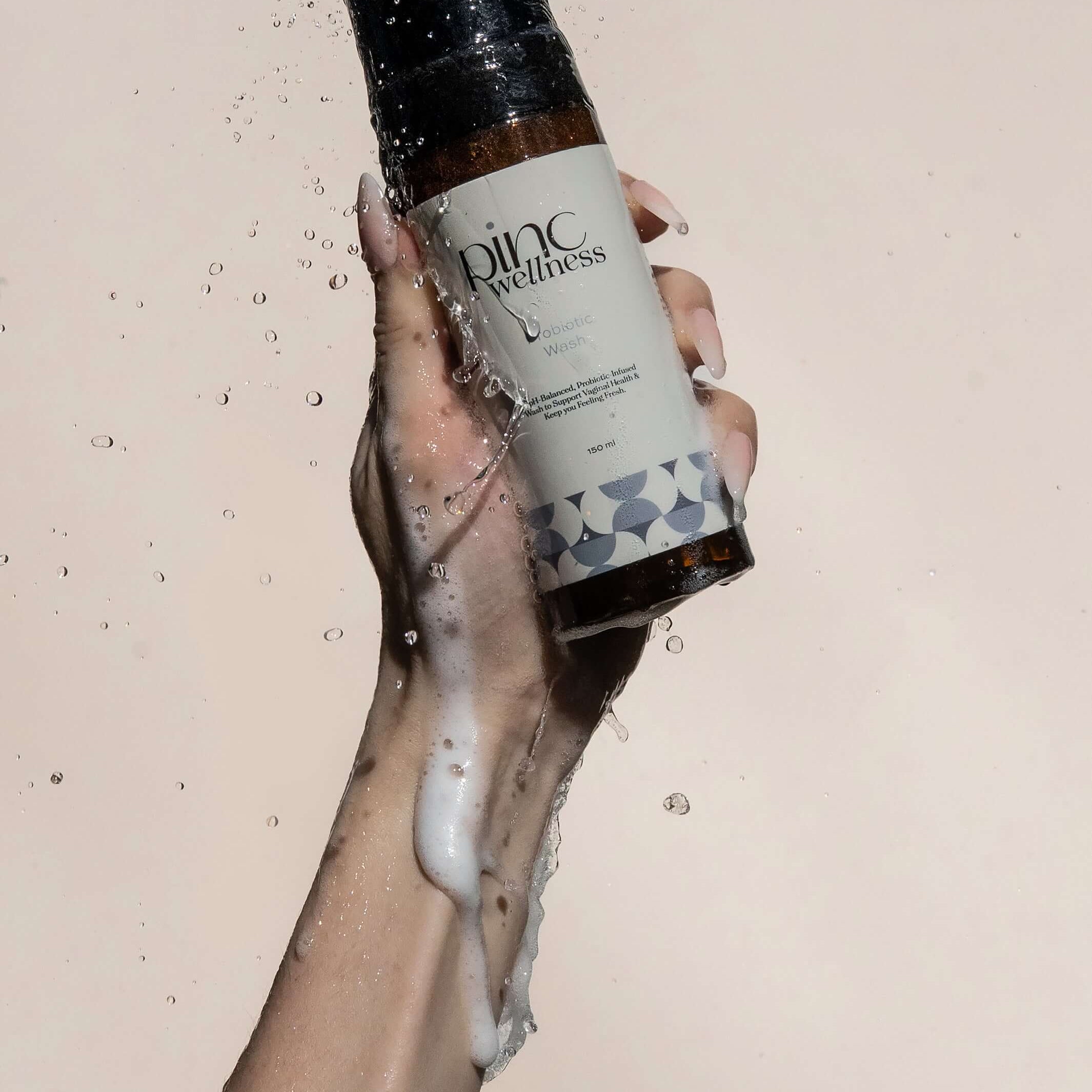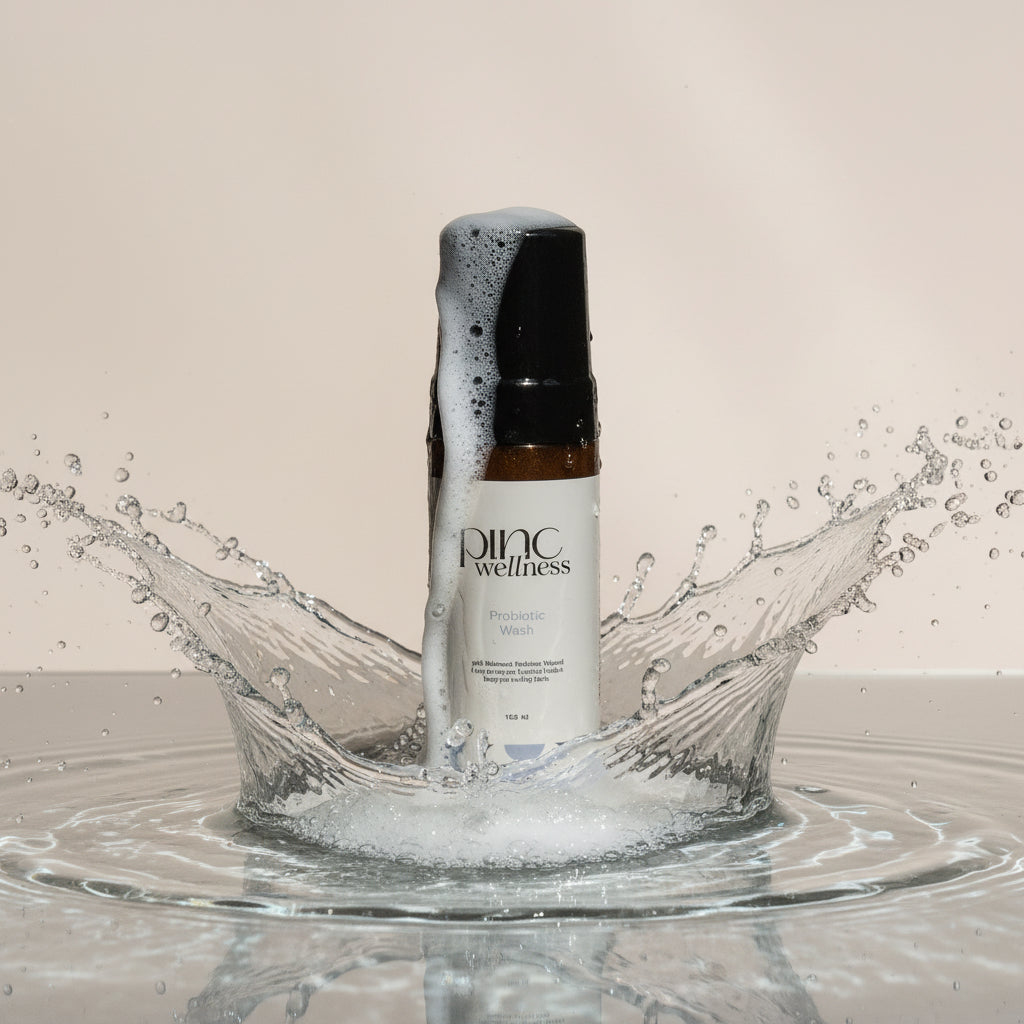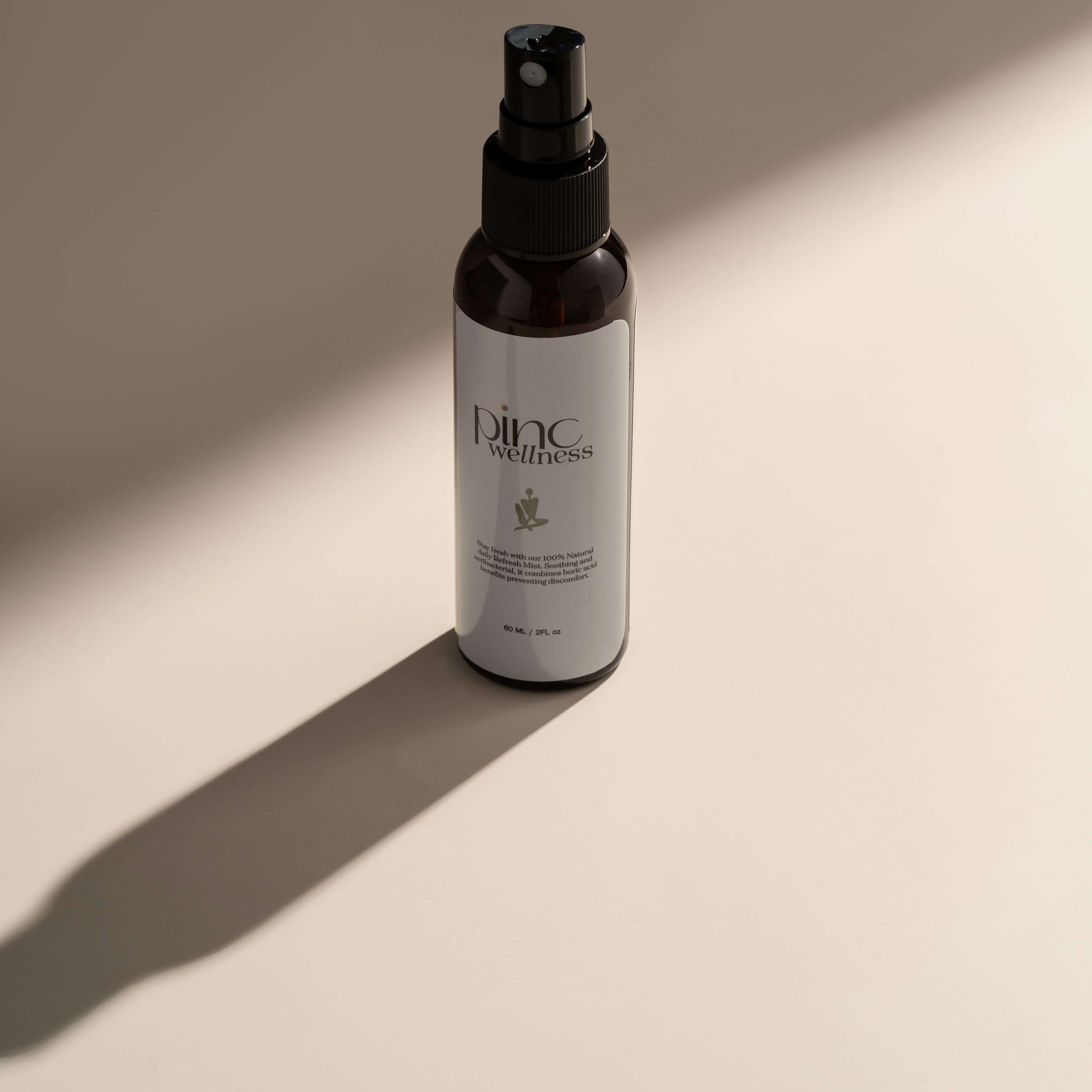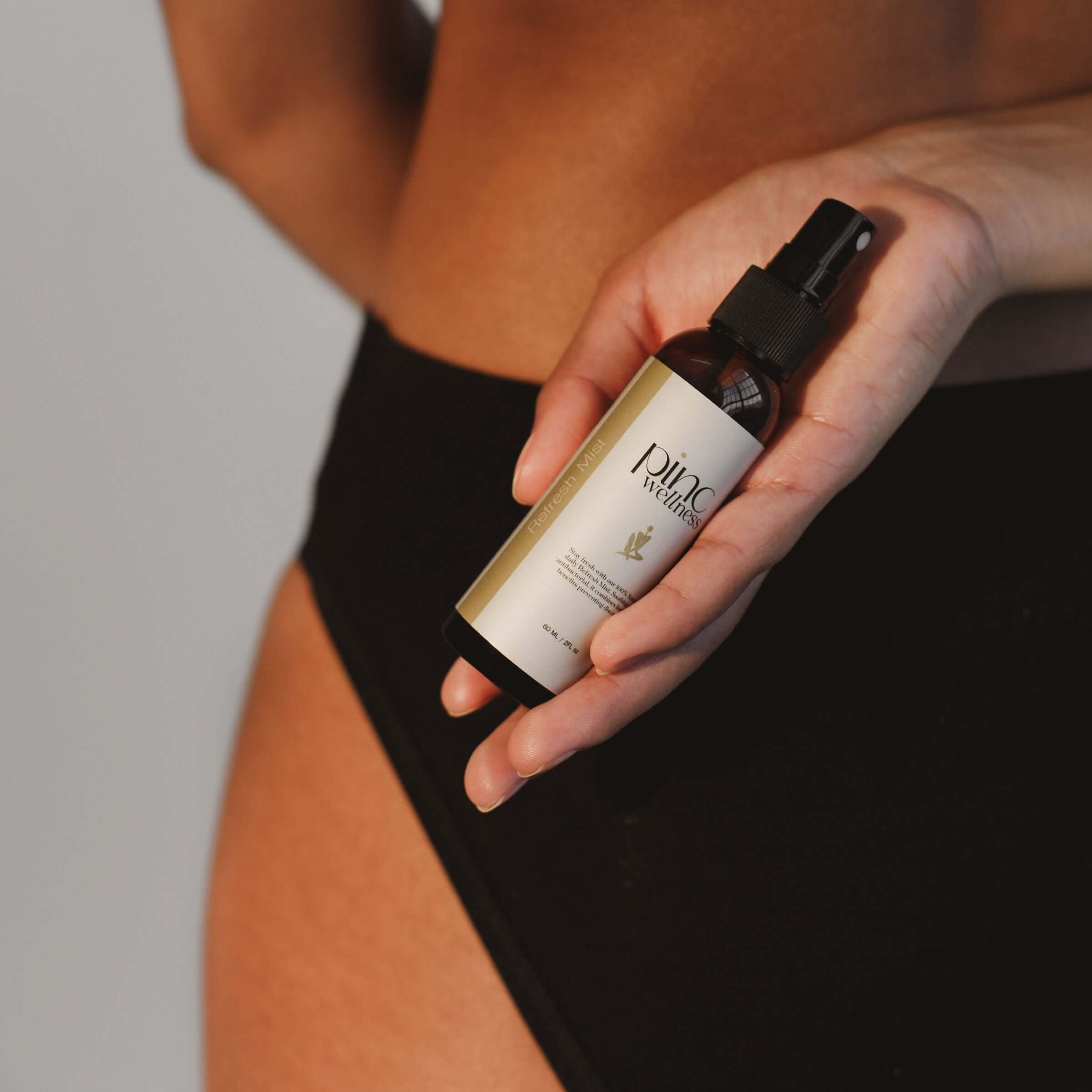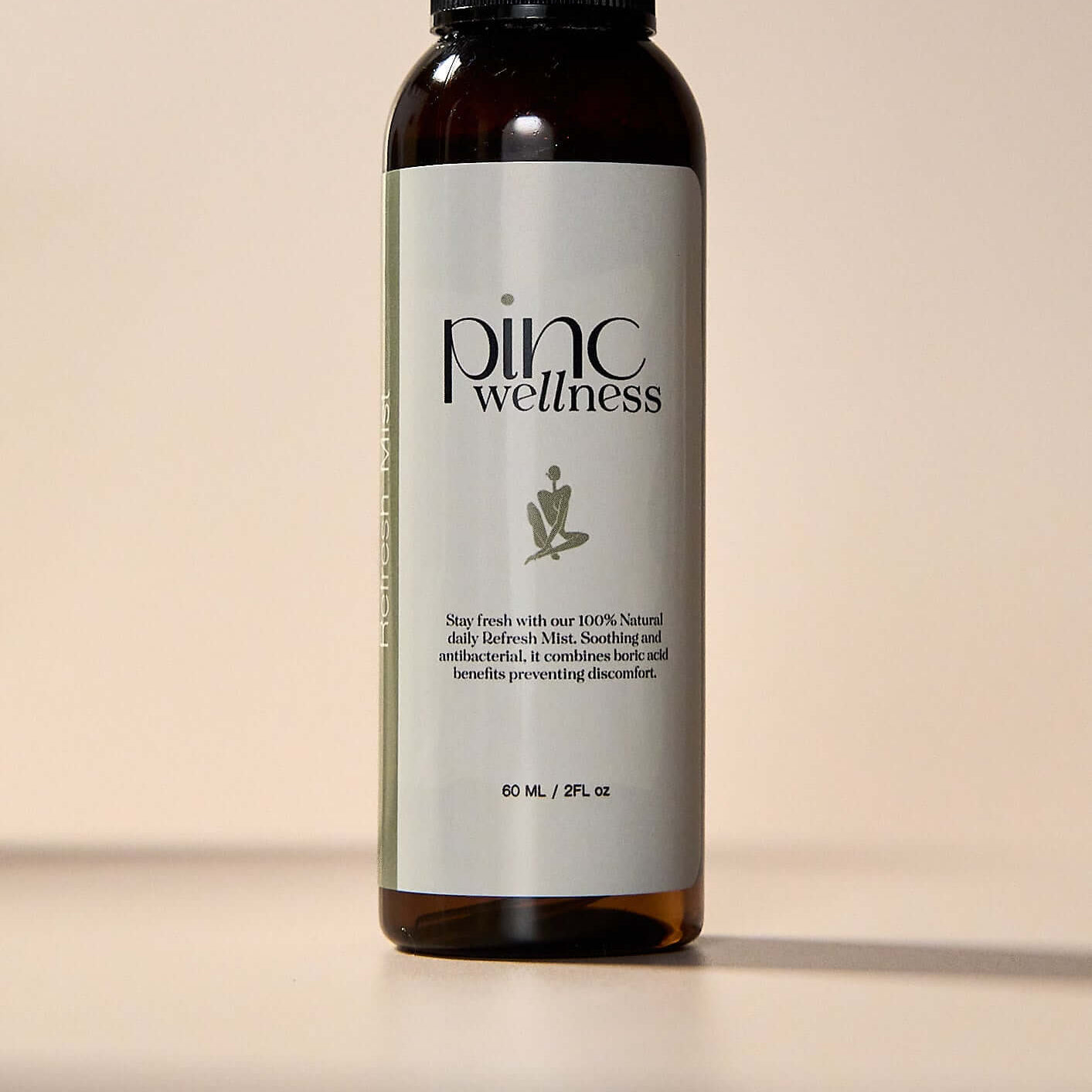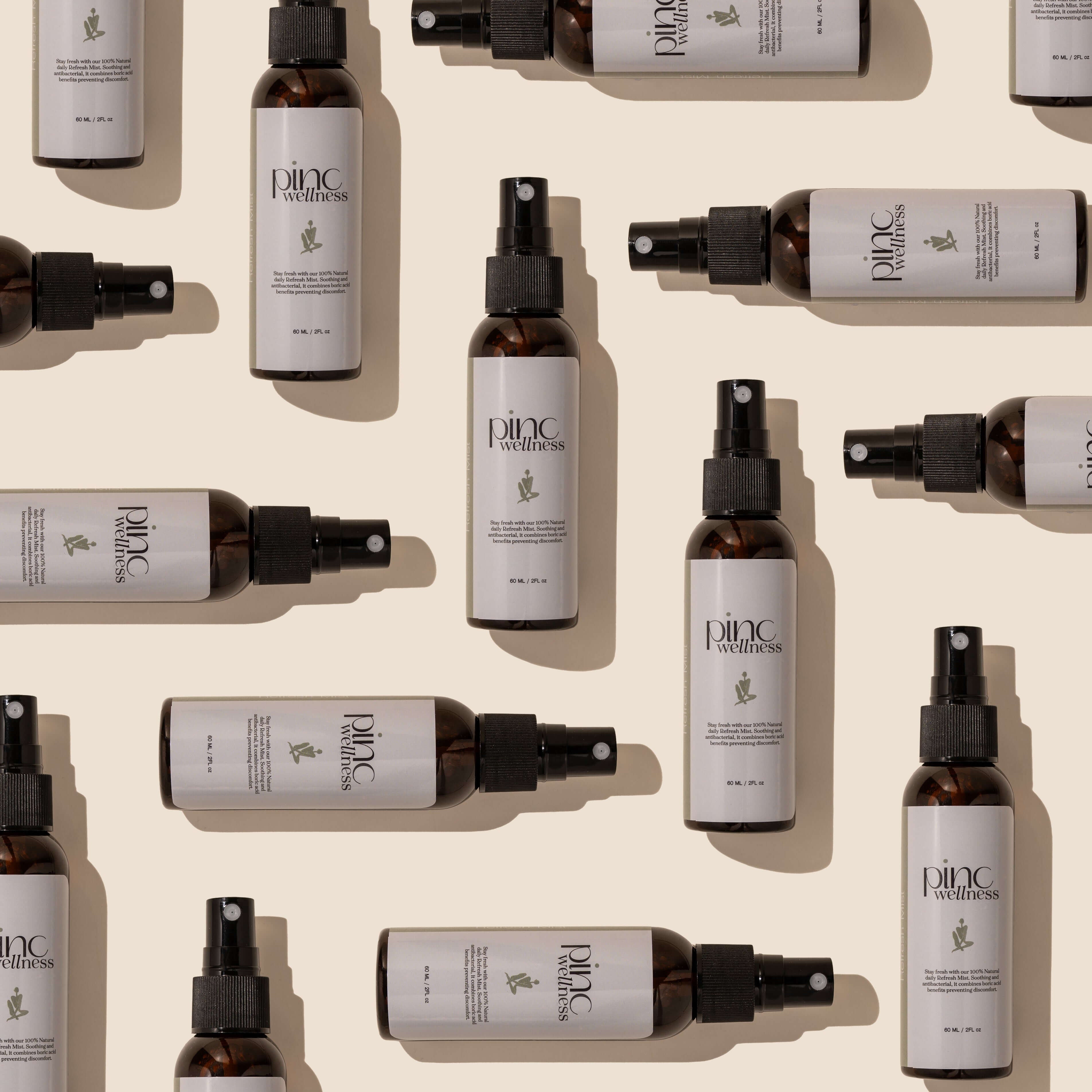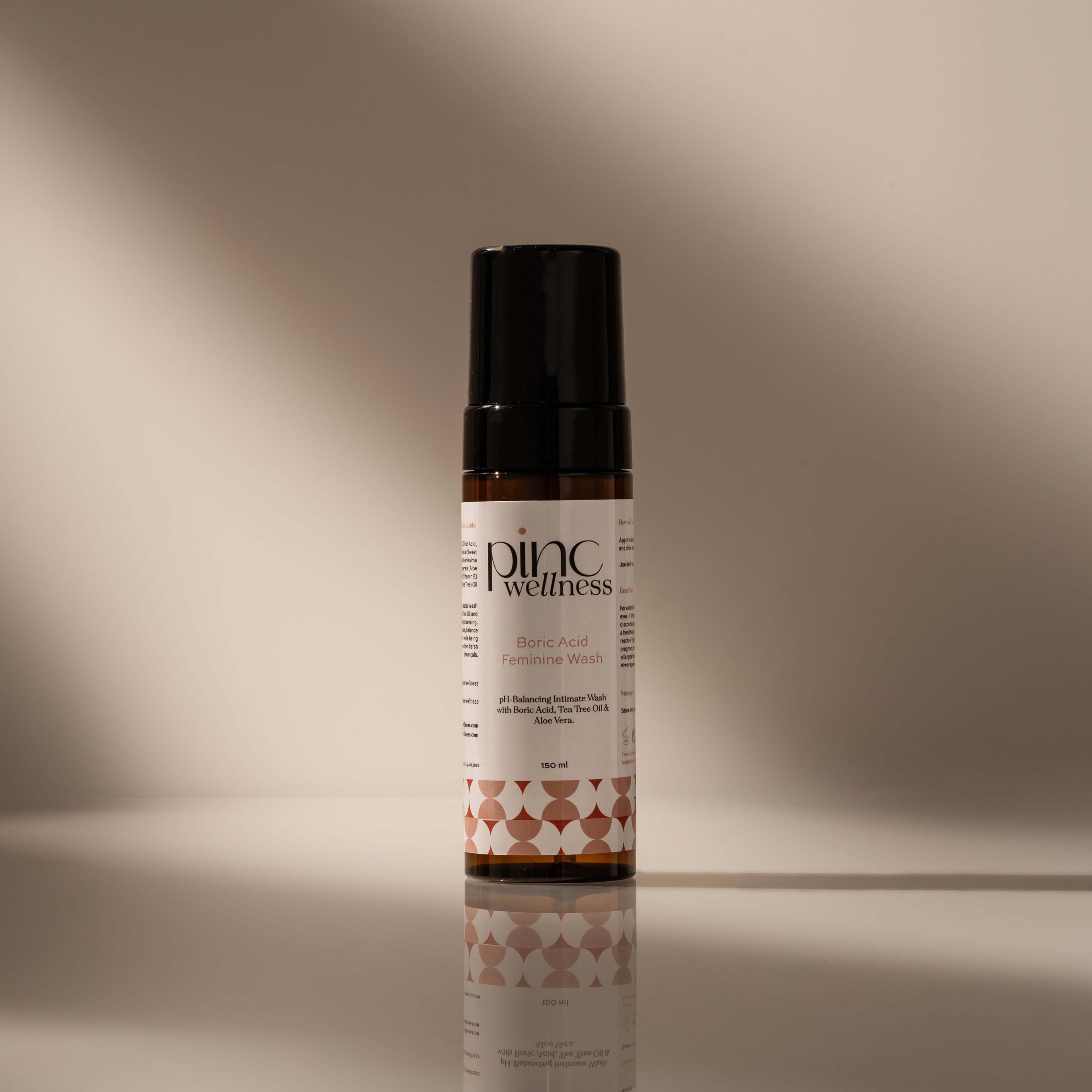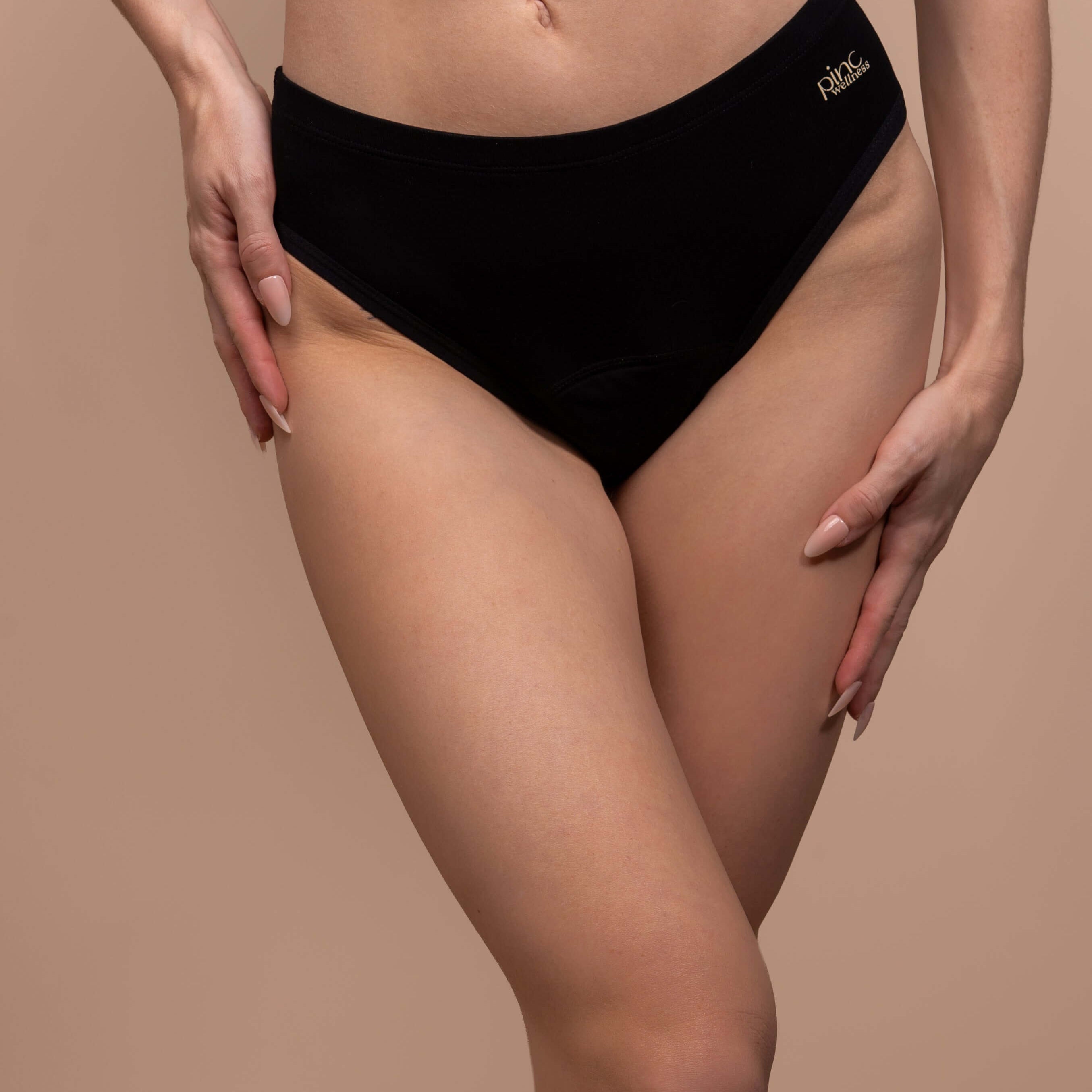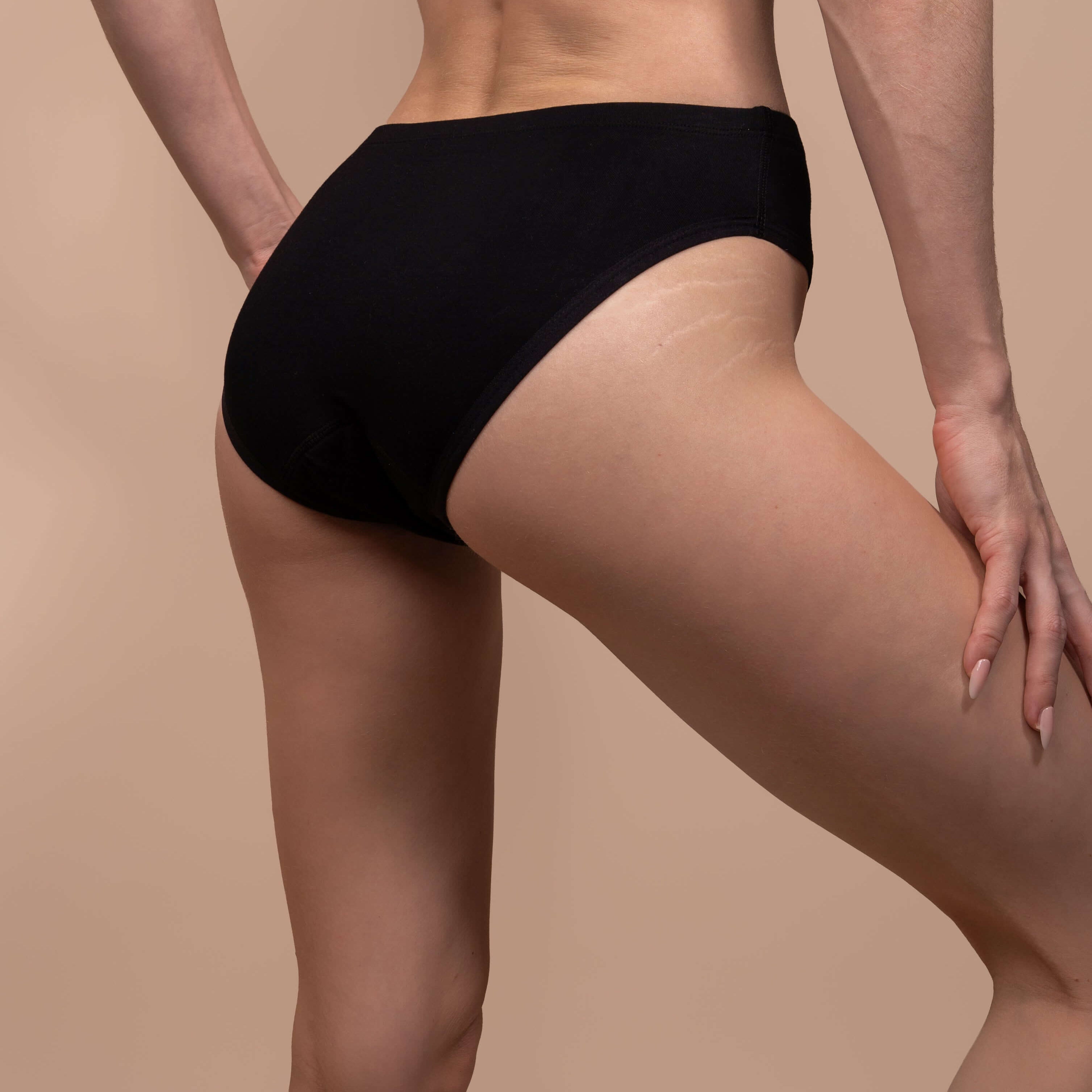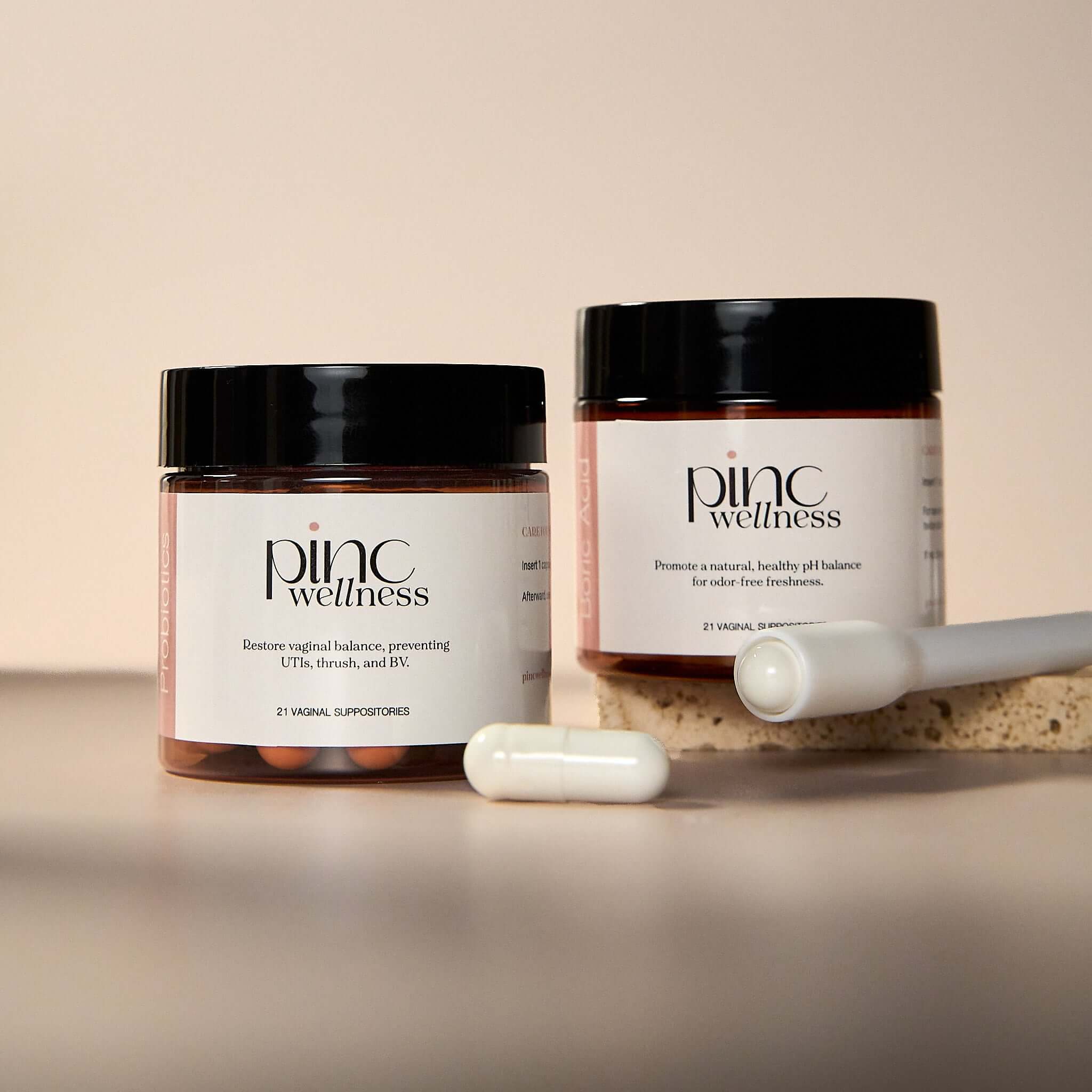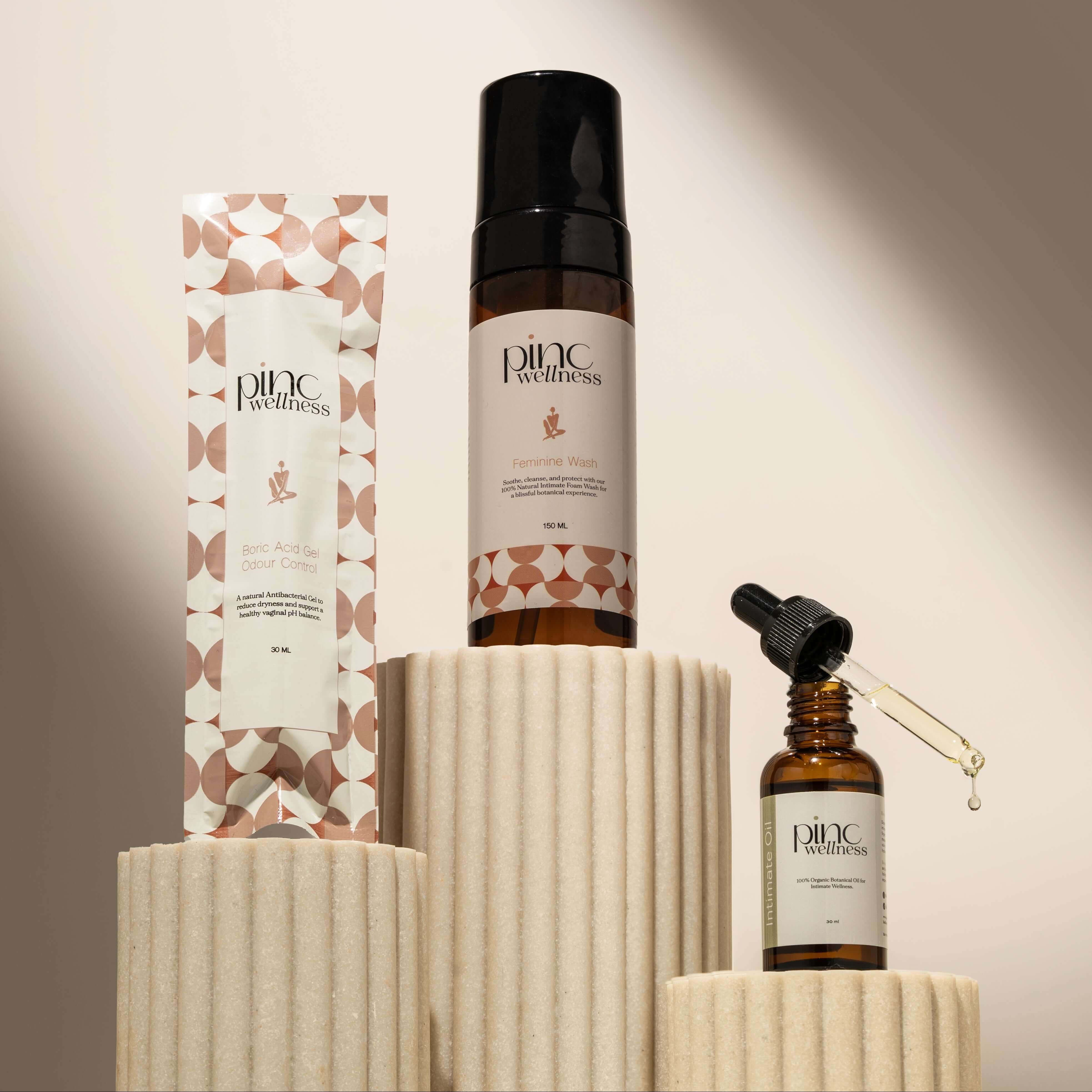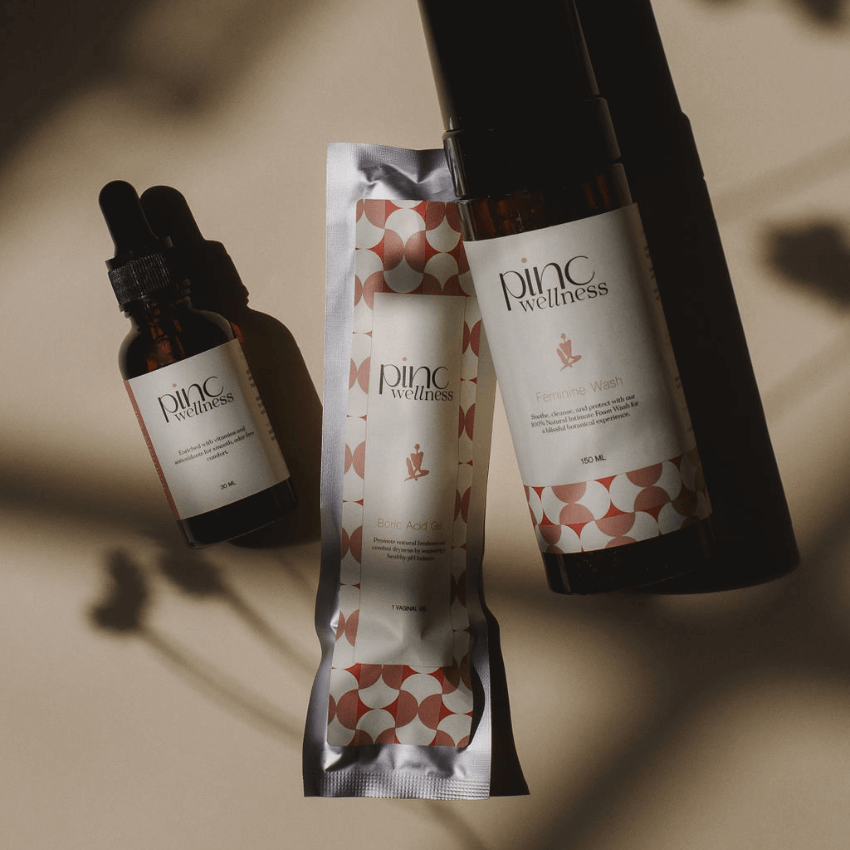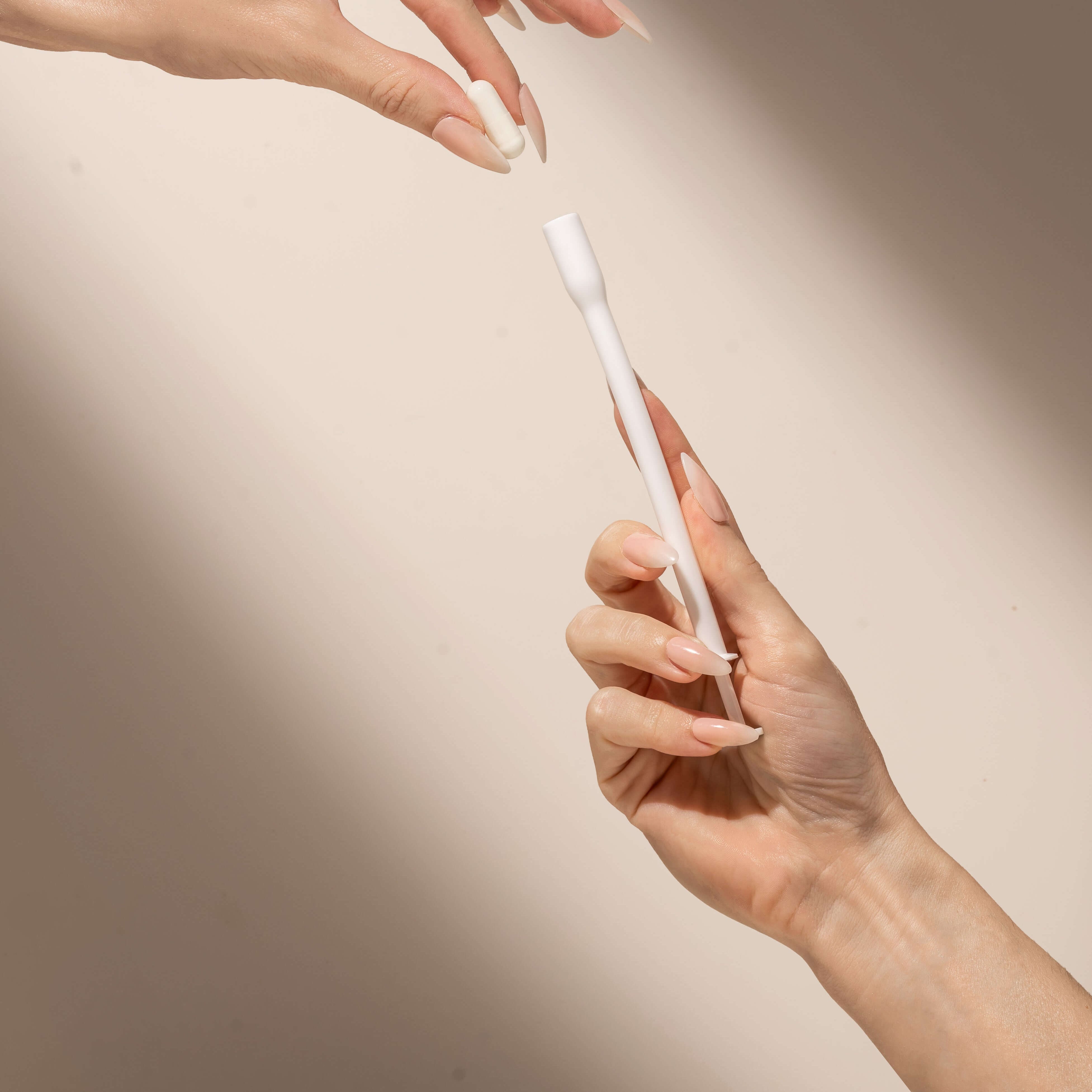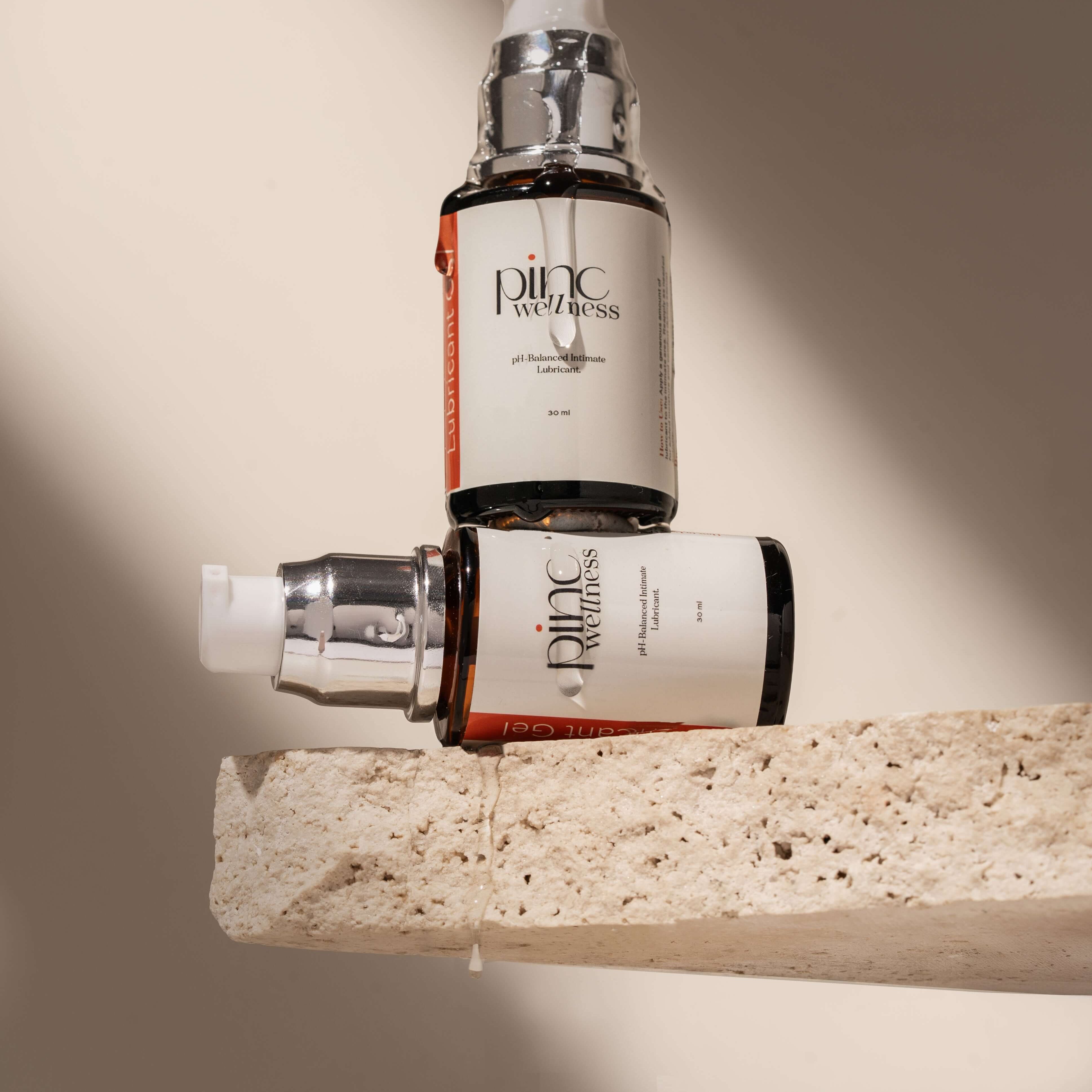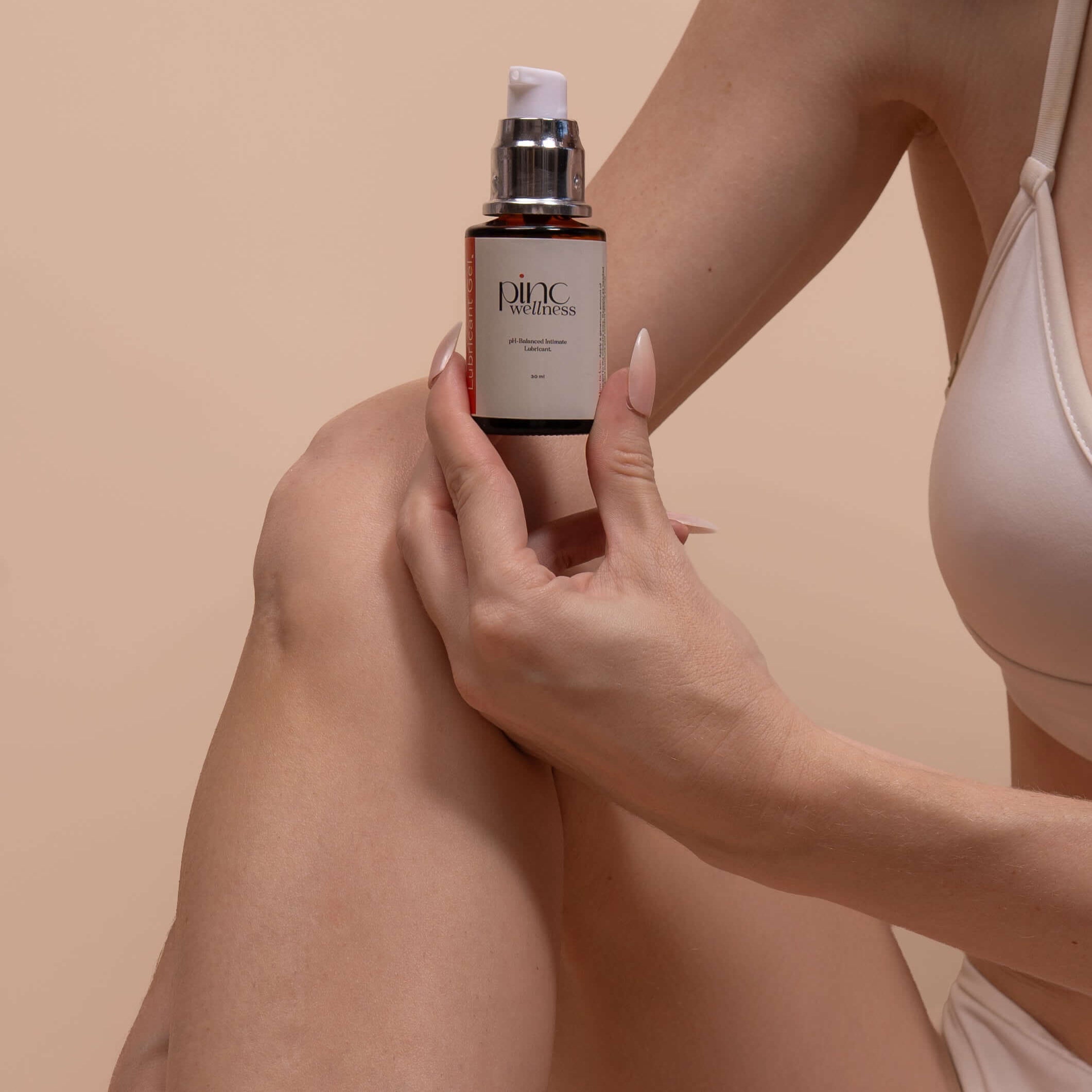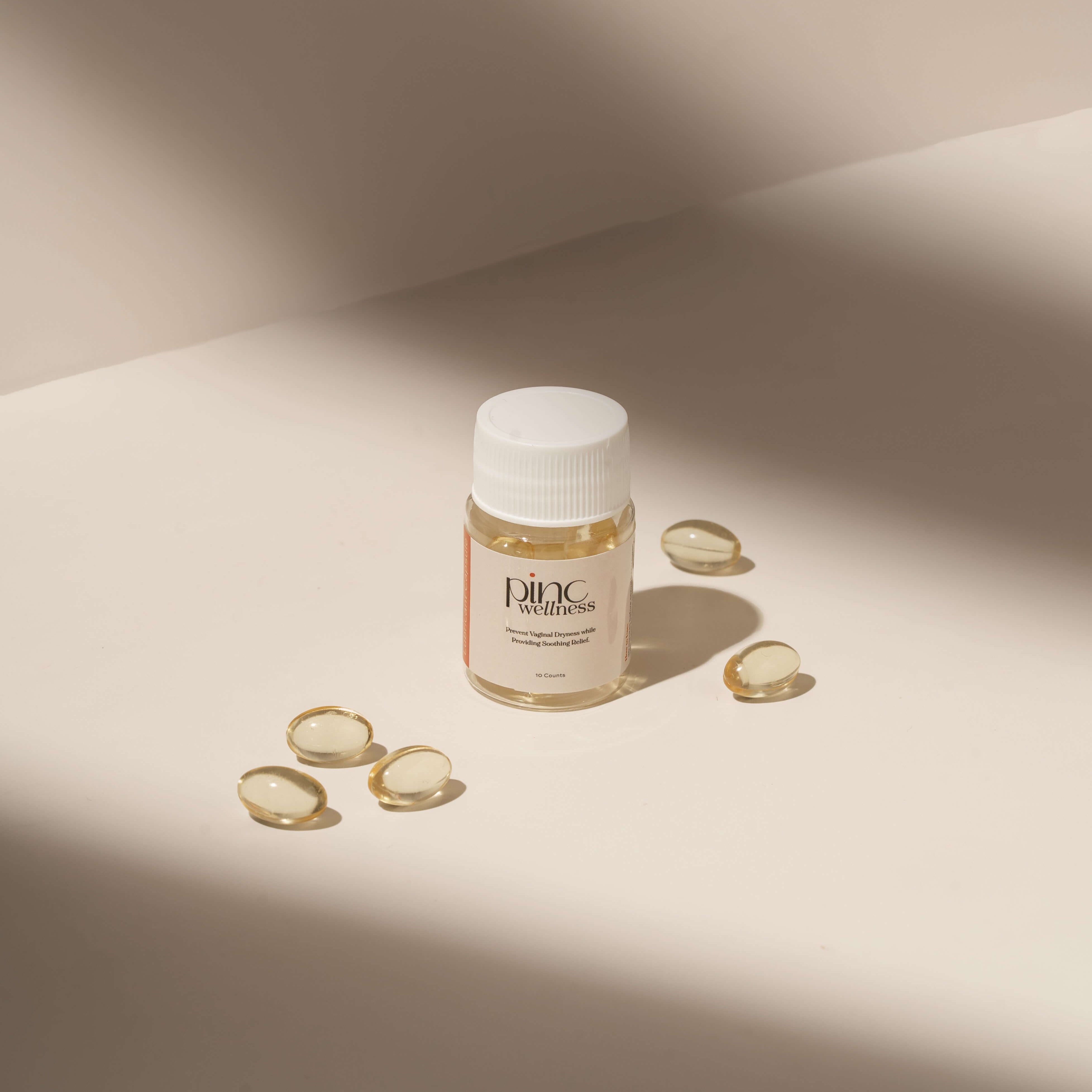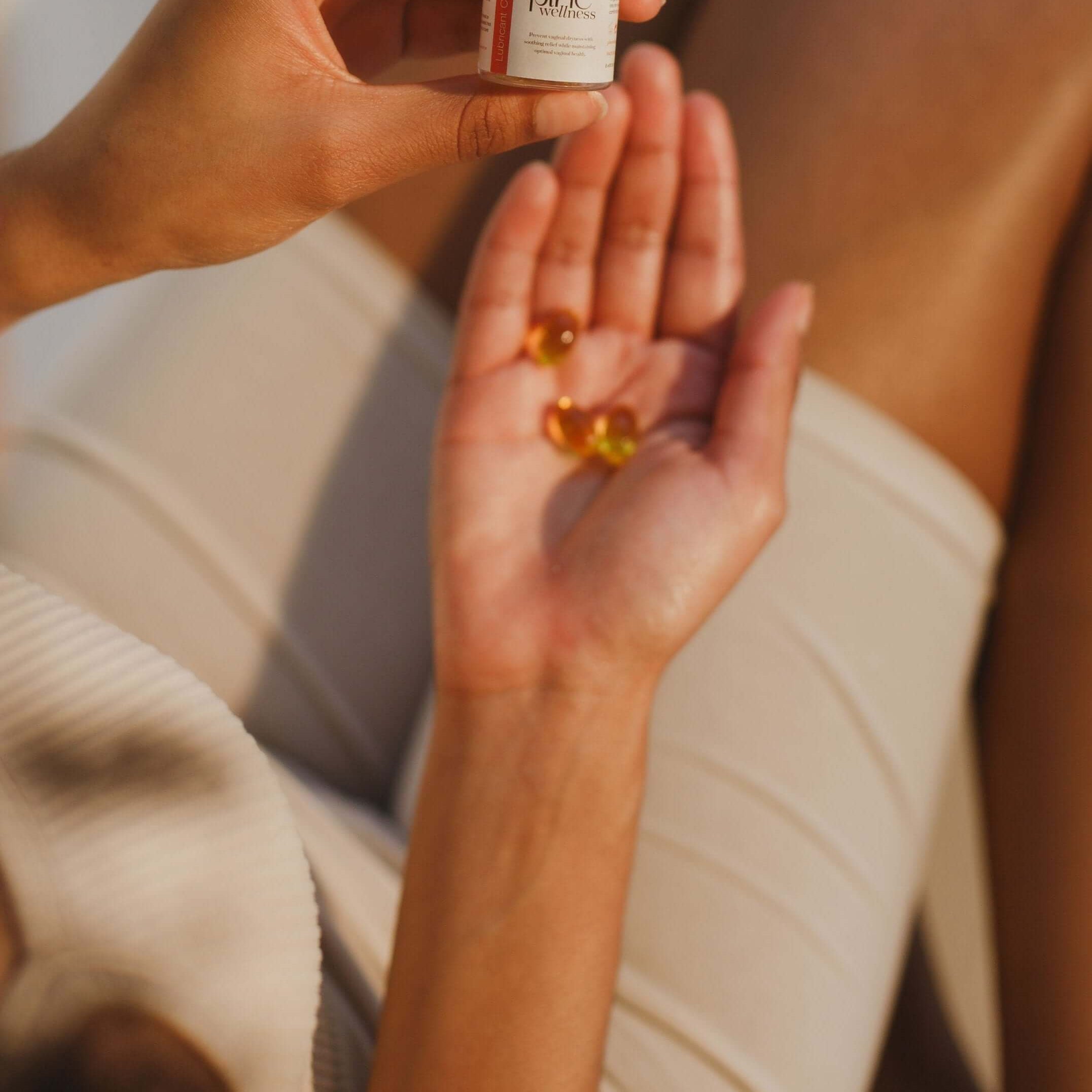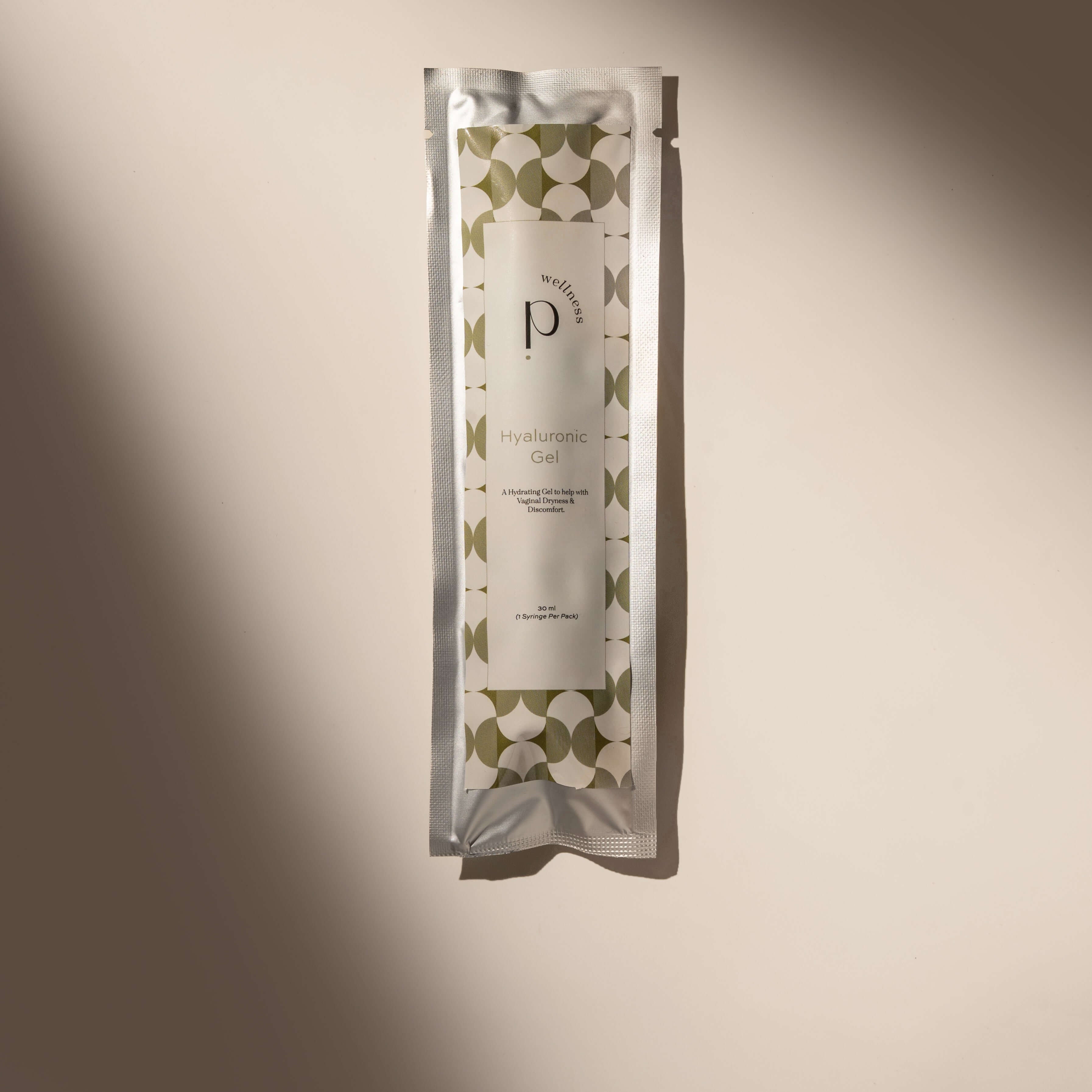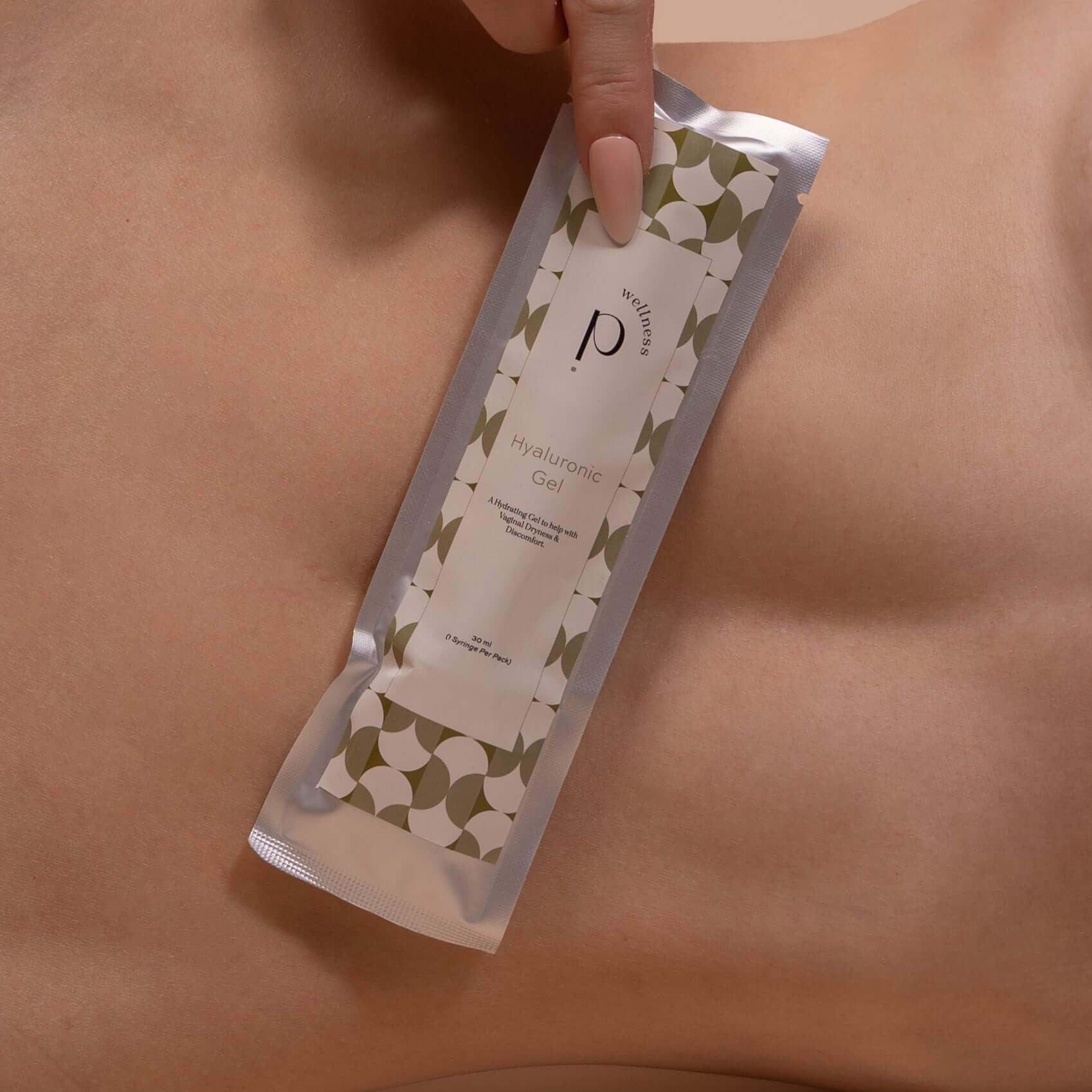Vaginal health issues like bacterial vaginosis (BV) and thrush affect a huge number of women. In fact, about 75% of women suffer from thrush in their lifetime. And yet, like so many aspects of female intimate care, these conditions are often brushed off, misunderstood, or awkwardly ignored.
At Pinc Wellness, we’re here to change that.
We combine intimate care products with real, accessible education so you can understand what’s happening in your body, and choose what’s right for it.

Why antibiotics don’t always work
Let’s talk about the standard go-to treatment: antibiotics. Sure, they kill off harmful bacteria but they also wipe out the good bacteria that keep your vaginal microbiome balanced. When that protective layer is gone, your vagina becomes more vulnerable to recurring infections like BV and thrush.
Many women experience thrush (a yeast infection) soon after finishing a course of antibiotics, not because antibiotics cause thrush directly, but because they upset the delicate balance of bacteria and yeast in the vagina. When the good bacteria are wiped out, yeast can overgrow.
It’s not your fault. It’s just that our current healthcare system doesn’t have enough solutions when it comes to female intimate care. That’s where we step in.
How Pinc Wellness Supports Your Vaginal Health
At Pinc, our approach is different. We focus on supporting your natural balance, not disrupting it. Whether you’re dealing with discomfort or simply want to support your everyday intimate care routine, our formulas are designed to work with your body.
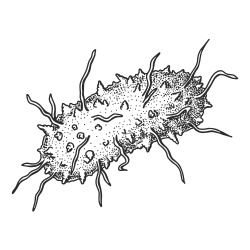
Antibiotics wipe out the bad bacteria, but they take the good ones down with them, disrupting your natural ecosystem.

Boric acid has bacteriostatic and fungistatic properties - it helps restore the vagina’s natural acidity and disrupts fungal cell membranes, making it harder for harmful microbes to thrive.

Due to its mild acidity, Boric Acid can help gently balance vaginal pH, restoring it to its optimal levels, creating an environment where your natural defenses can flourish.
Wellness Begins Within
Looking for a little daily support? Explore our gentle care products designed with your intimate care in mind. Try our Refresh Mist a pH-friendly spray that keeps things feeling fresh, calm, and balanced throughout the day. It’s an easy, non-irritating way to stay confident and comfortable, wherever life takes you.
Wellness truly begins within, and at Pinc Wellness, we're here to support you every step of the way on your journey to better vaginal health and confident female intimate care.
Bacterial vaginosis
What is bacterial vaginosis?
Basically, BV is a bacterial infection caused by an overgrowth of bacteria in the vagina. It’s estimated1 in 3 women suffer from BV at some point in their lives.
Bacterial vaginosis happens when the ‘bad’ bacteria (anaerobes) overpower the ‘good’ bacteria (lactobacillus), and your vaginal flora finds itself out of balance.
Where does BV come from?
Common triggers for BV include sexual activity, particularly with a new or multiple partners, and exposure to semen, which can disrupt the vagina's natural pH. Taking antibiotics may also play a role, as they can impact both harmful and beneficial bacteria. Hormonal changes, such as those that occur during menstruation or from using certain forms of birth control, can also contribute. Additionally, washing inside the vagina or using products like douches can disturb the natural balance of bacteria and lead to BV.
How does it spread?
While you don’t "catch" BV from someone in the same way as an STI, it can be passed between sexual partners, especially through unprotected sex or between partners with vaginas. Exposure to semen, a new sexual partner, or frequent partner changes may increase the risk by altering the vaginal pH and microbiome.
BV can also recur even without sexual contact. Factors like hormone fluctuations, antibiotics, or using scented soaps and washes can disrupt your vaginal balance.
So while BV is not officially classified as an STI, sex and intimate contact can play a role in its spread or recurrence, which is why using protection and maintaining good vaginal care practices is helpful in prevention.
What are the symptoms of BV?
A fishy smell (especially one that gets stronger after sex)
Thin white, grey or green discharge.
Burning when you pee.
Irritation and/or itching.
Yeast Infection
What is thrush?
Thrush is a yeast (or fungal) infection, caused by an overgrowth of yeast (specifically the fungus candida albicans) in the vagina.
This fungus exists naturally in our bodies, normally with no issue. But sometimes it starts to multiply and cause symptoms.
Thrush is so common. In fact, about 75% of women experience thrush in their lifetime.
What causes thrush? How does it spread?
Thrush can be brought on by many factors, including hormonal changes during periods and pregnancy, the use of some antibiotics, and wearing tight pants or underwear made from synthetic materials.
Like BV, thrush is not sexually transmitted.
What are the symptoms of thrush?
A ‘yeasty’ smell.
Thick, white discharge that looks like cottage cheese.
Burning when you pee or during sex.
Irritation and/or itching.
Painful splits in the skin of, or surrounding, the vagina or vulva.

